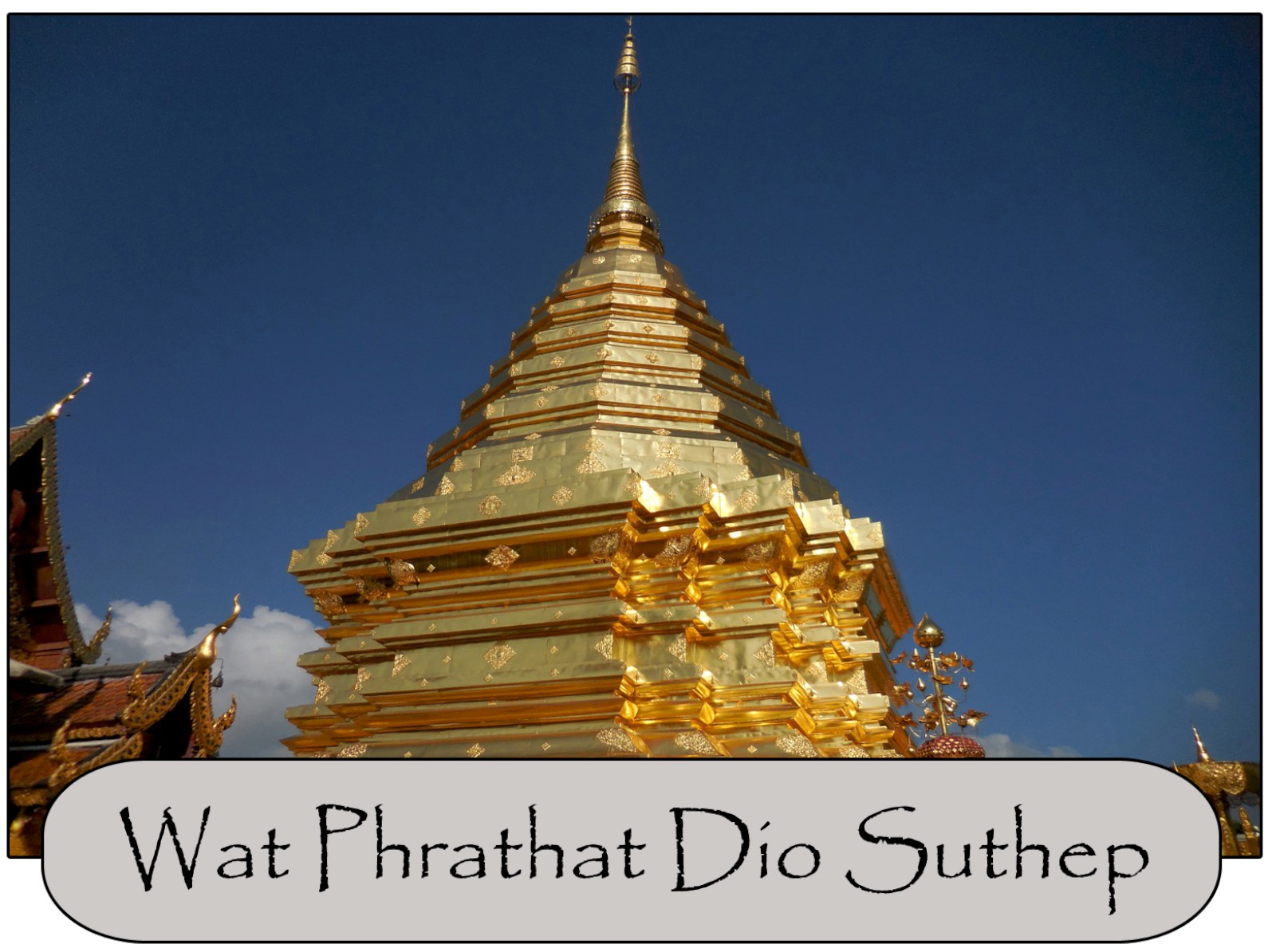Wat Pha Lat is a small serene jungle temple near Chiang Mai, Thailand.
Wat Pha Lat is one of the lesser known temples in Chiang Mai but it is also one of my favorites mainly because it is isolated in the jungle which gives it a quiet and peaceful atmosphere. The translation of the temples name, Wat Pha Lat means “Temple on the slanting rock”.
The temple was built in 1355 at the direction of King Kuena after his white elephant died at the site where the elephant perished. Originally, Wat Pha Lat was a resting place for monks during their pilgrimage to the larger temple on top of the hill (Wat Phrathat Doi Suthep). A road was built directly to the hill top temple so taking the jungle trail is no longer required and the primary use of Wat Pha Lat has shifted to a meditation site for monks.
Note: most articles that I have read on Wat Pha Lat seem to be more focused on the hike to get there than the temple itself, my interest is the complete opposite. I found this temple to be a wonderful experience so I will focus on the actual temple complex.
Entrance to the temple
There is no real easy way to get to the Wat Pha Lat. There are two entrances that can be taken. Most people visiting the temple choose to take the 40 minute jungle hike on the monks’ trail. The second entrance can be reached by car but the entrance cannot be seen from the road so it is necessary to have a local driver take you to the entrance. This entrance is near the Wat Phrathat Doi Suthep so we found a driver that would take us to both temples.
The entrance to the temple is between two unusual looking stone statues. These statues have a face that reminded me of an elf with a human upper body and an animal lower body. On the outside of each of this statues are an intimidating animal statue with green stone eyes.
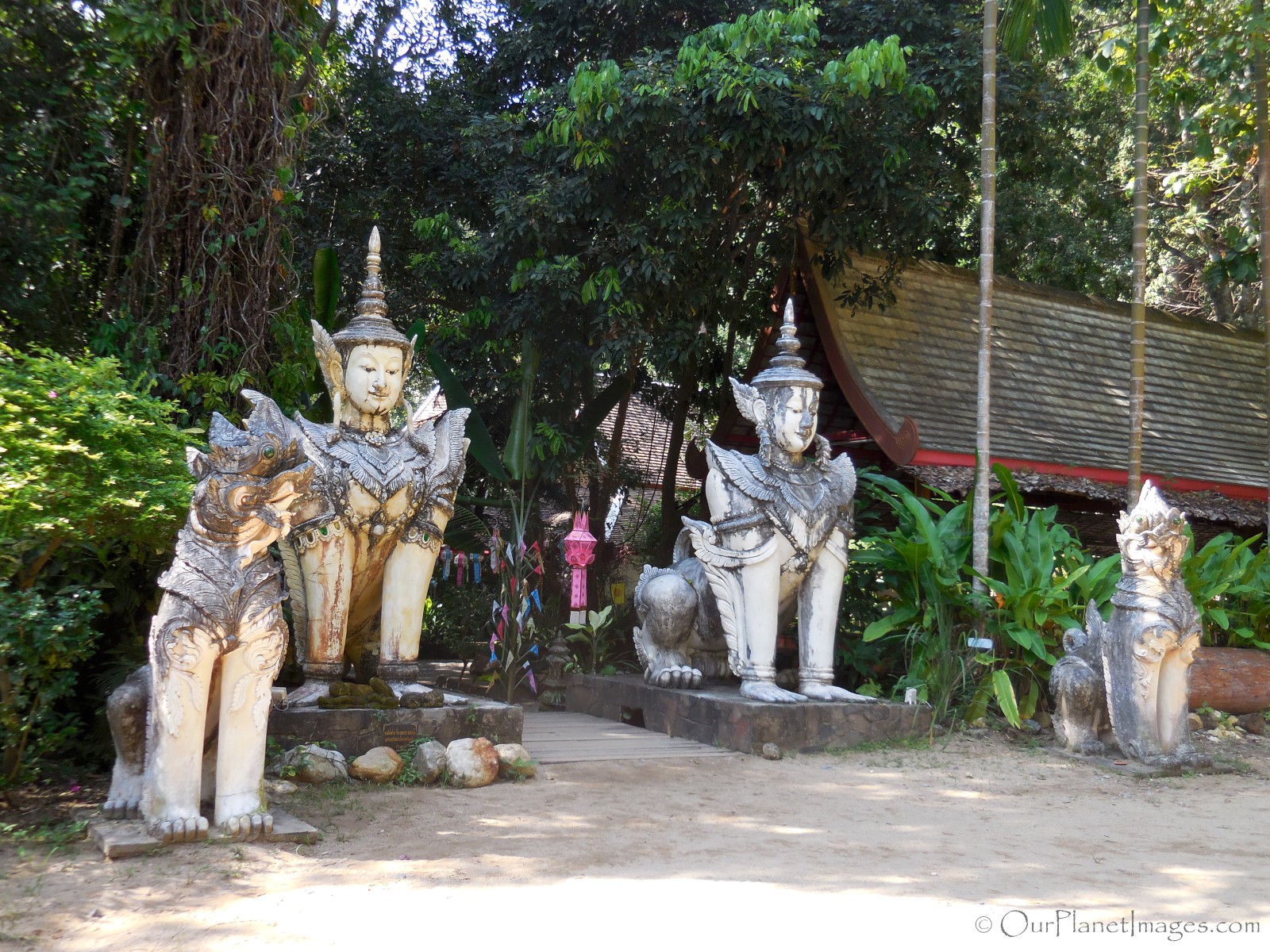
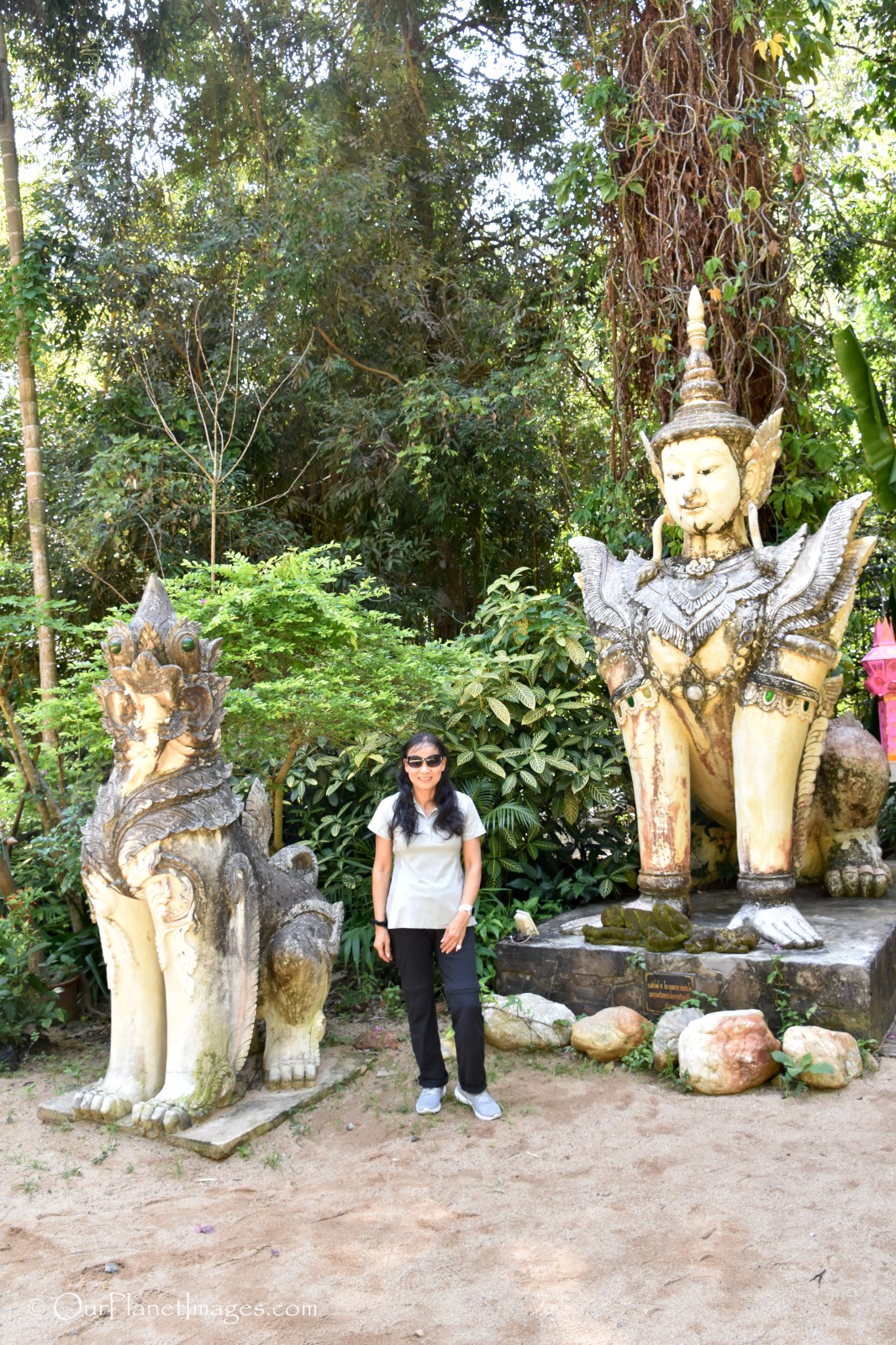
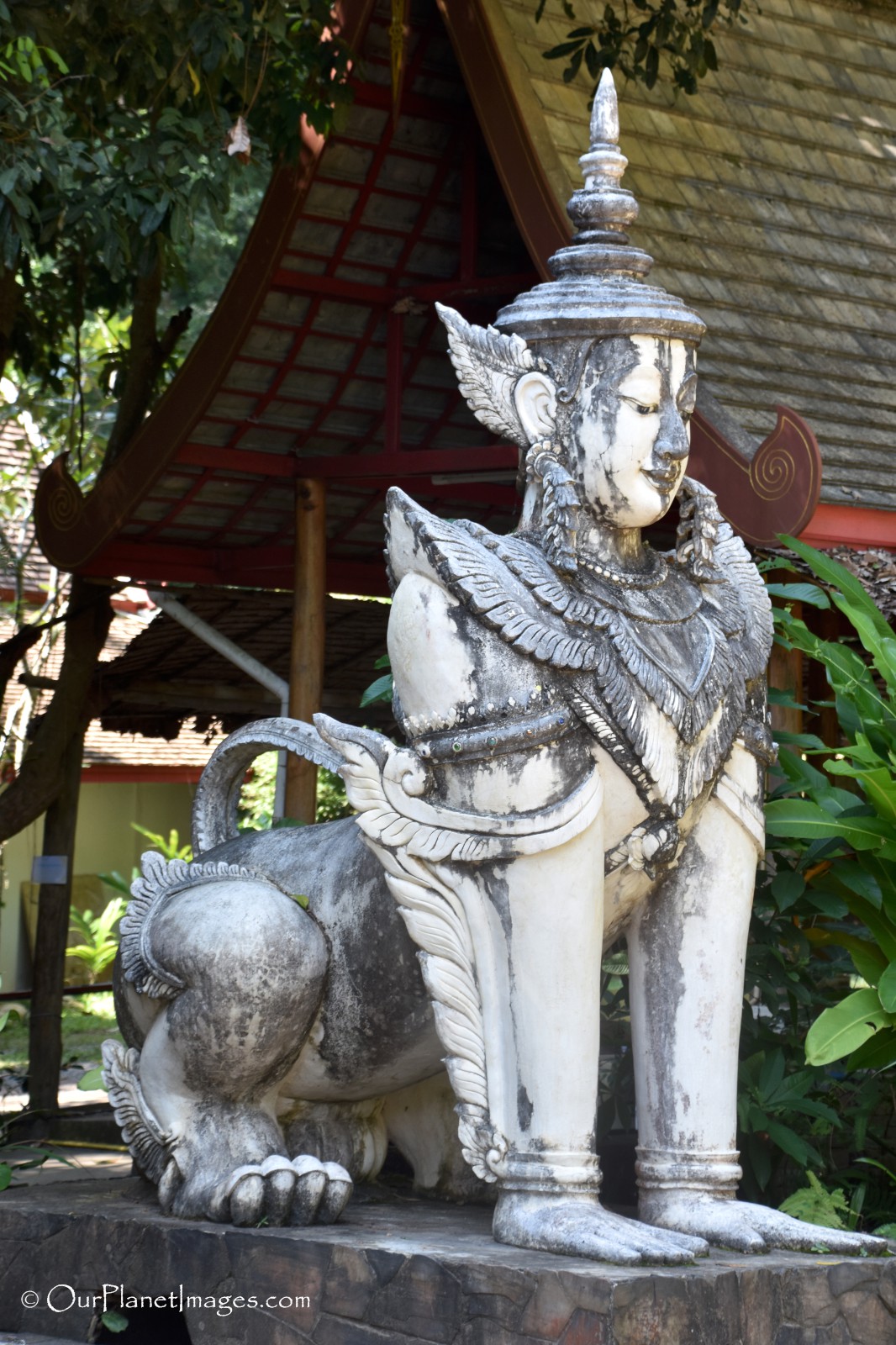

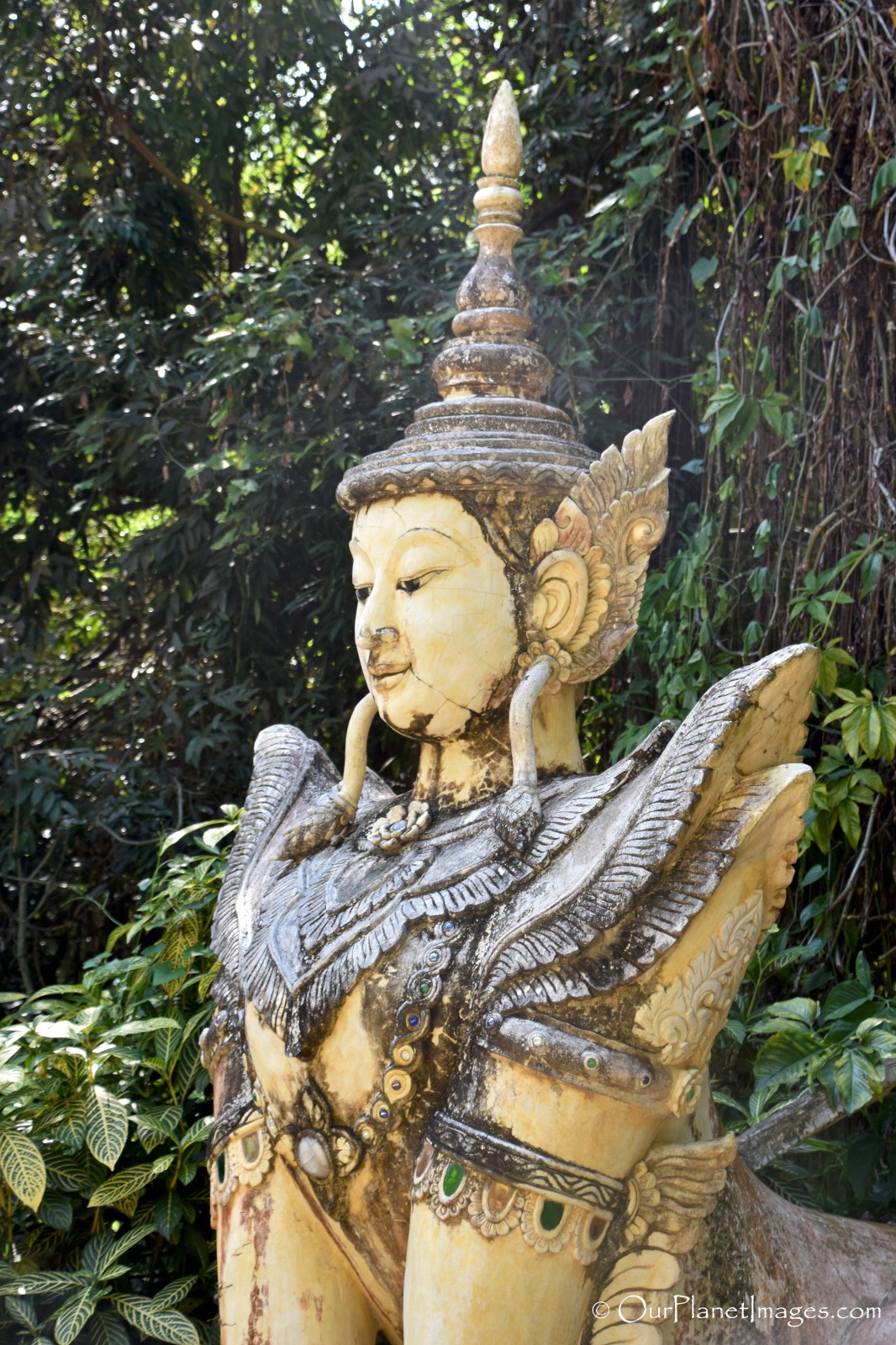
Viharn (Buddhist Monastery)
The main worship site is at the top of a stairs that is framed by two statues that have the head and body of a human but the tail of a serpent.


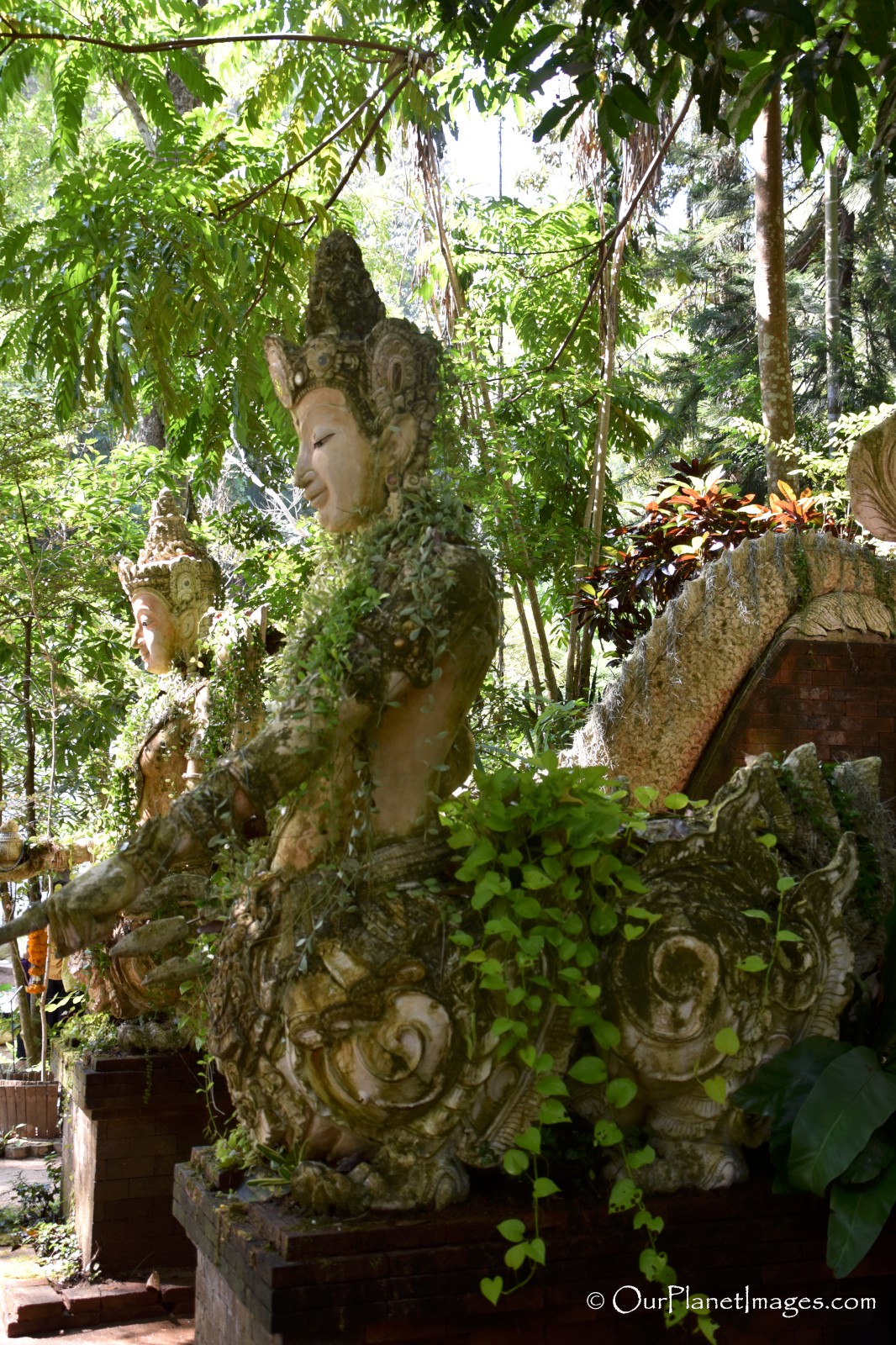
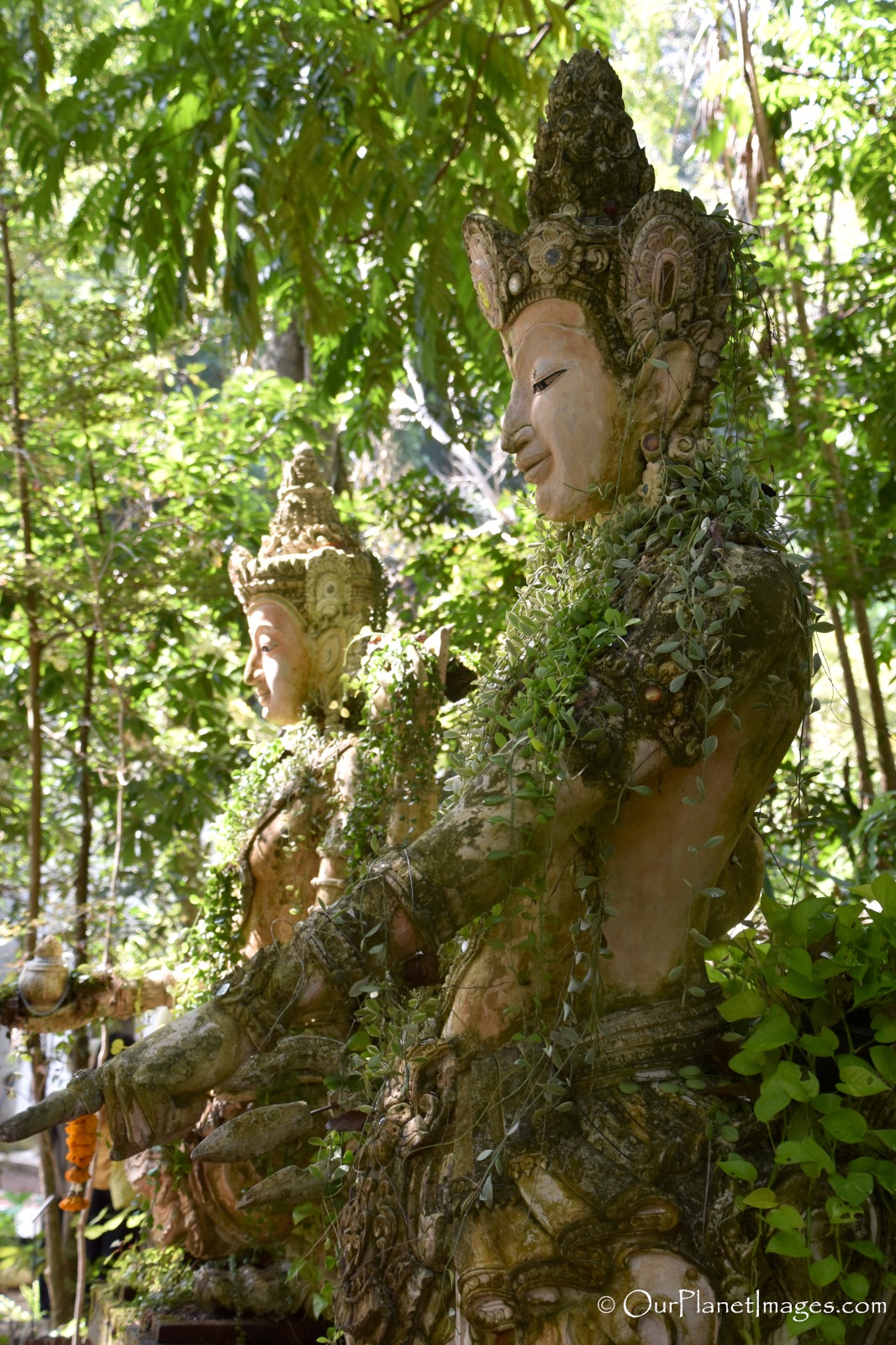
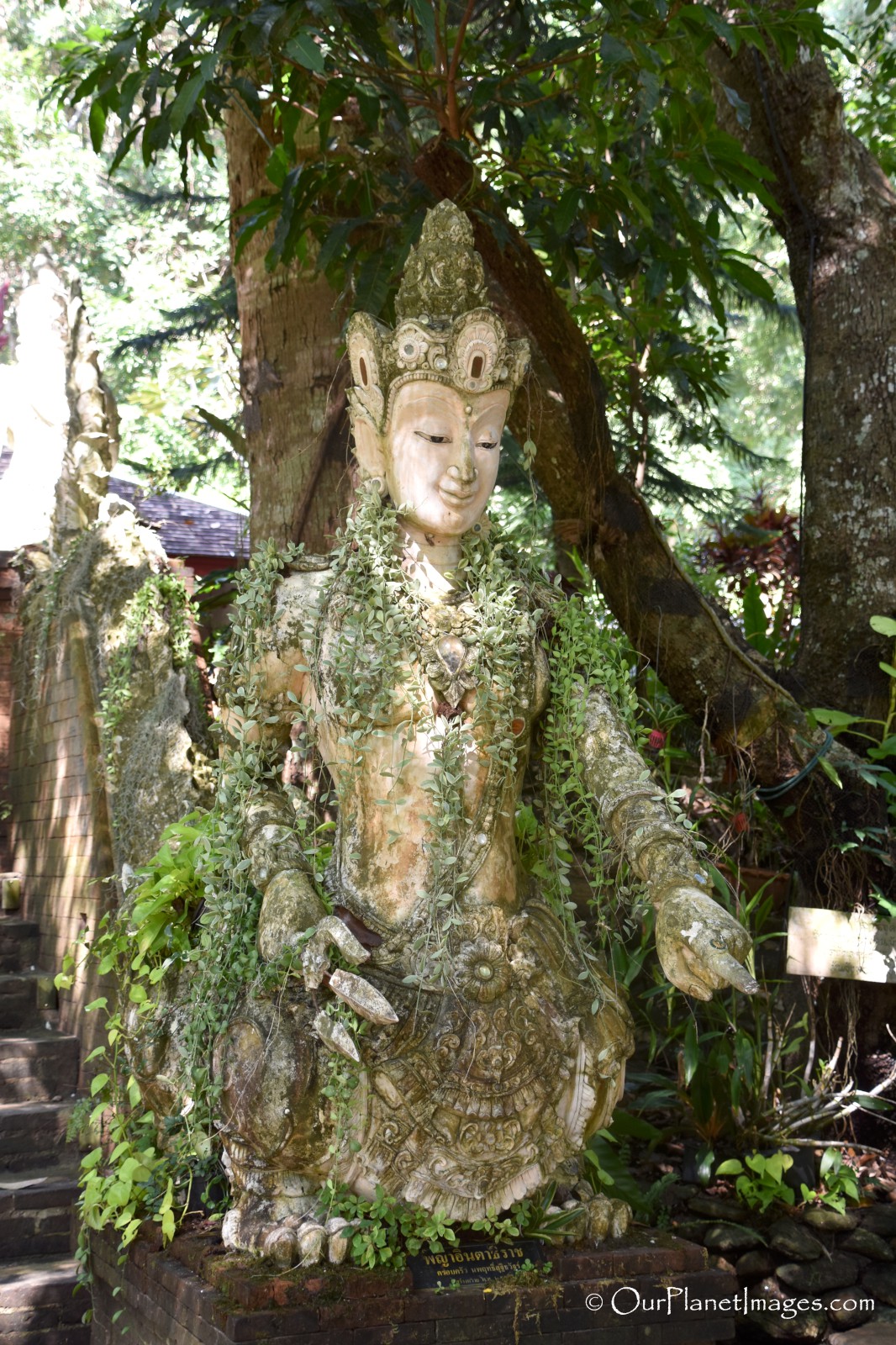
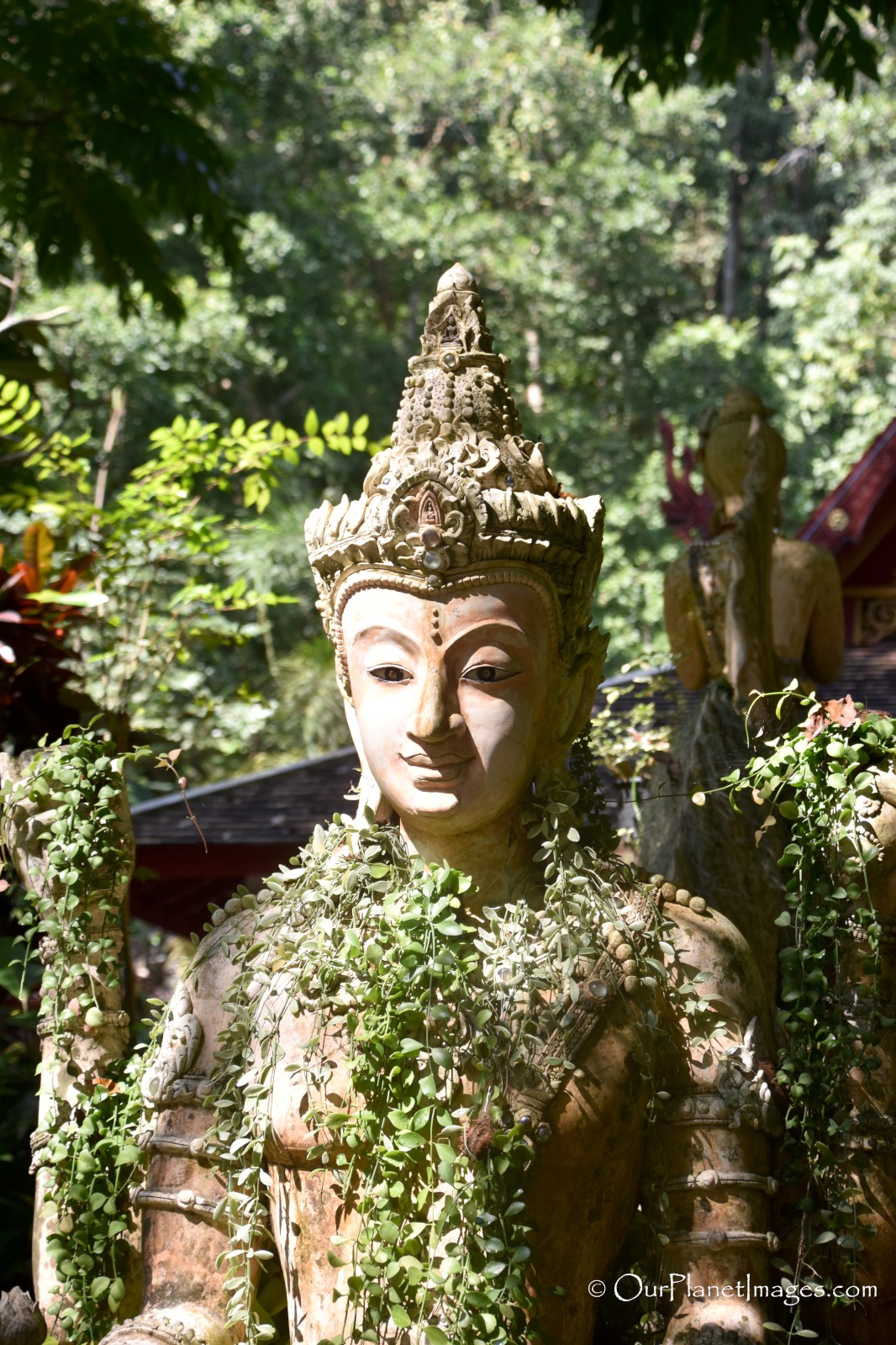
At the top of the stairs is the worship hall with several Buddha statues. The focus point of the worship hall is three black Buddha statues, one large and two smaller statues behind the larger statue.
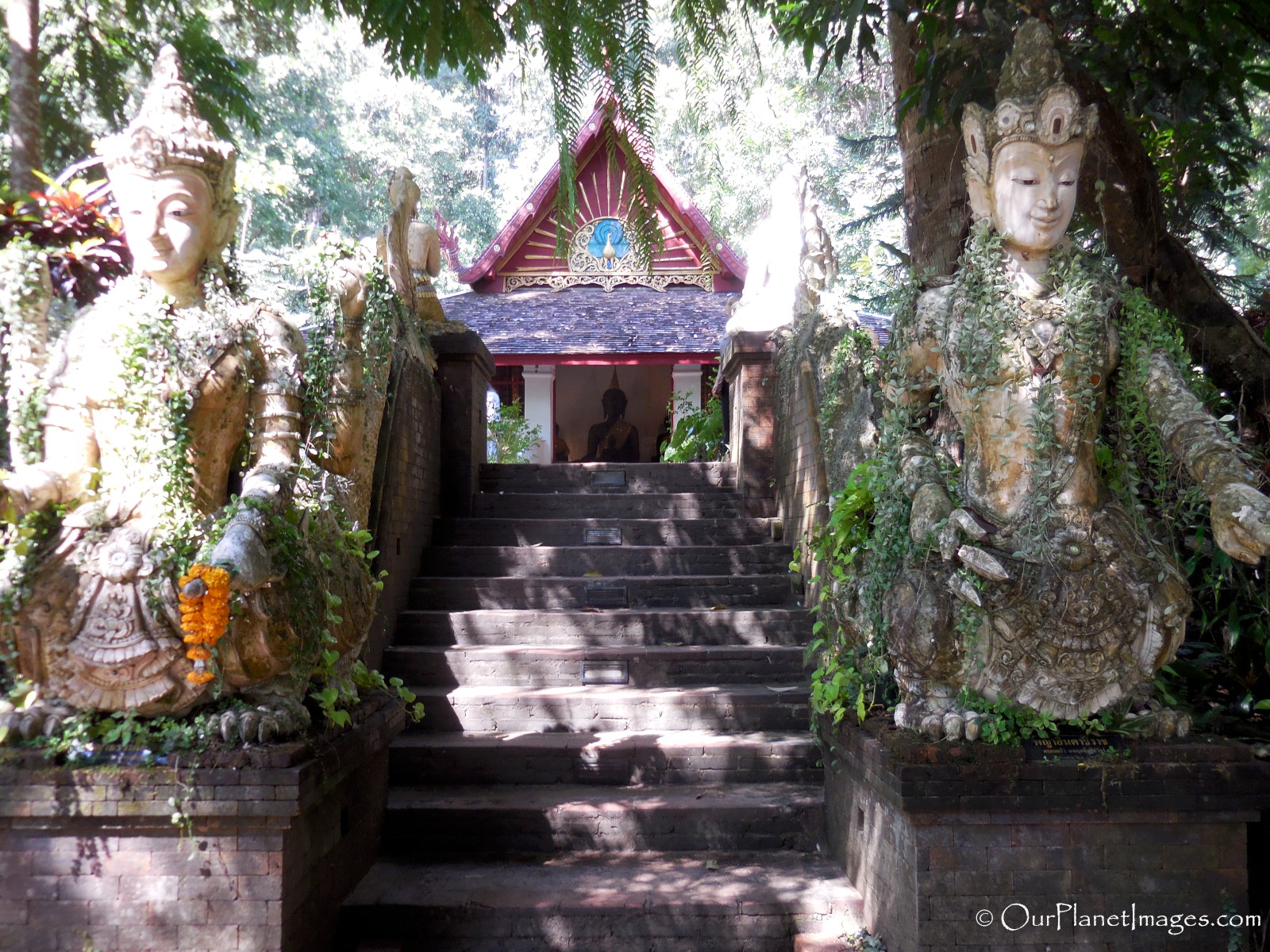

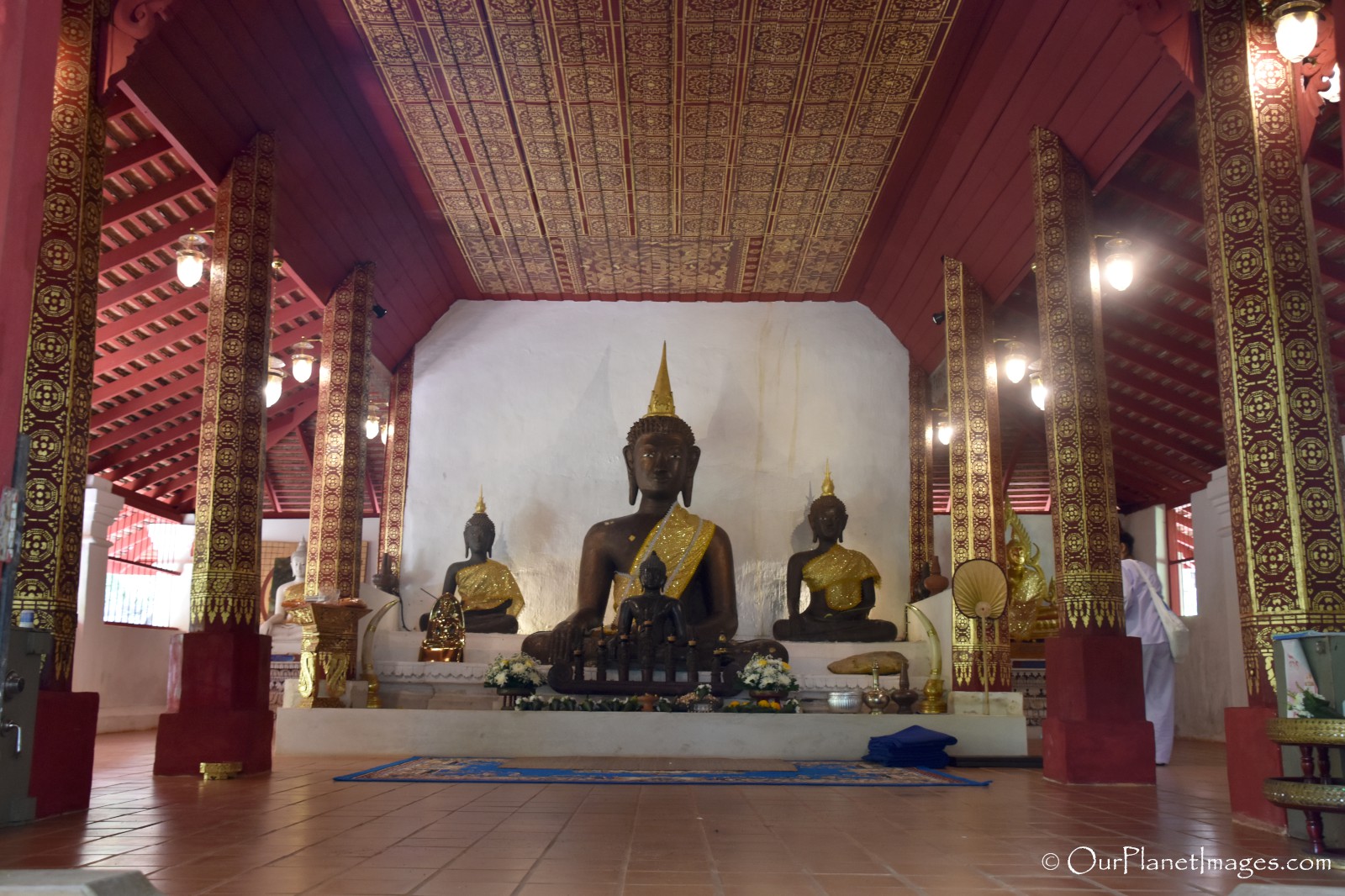

Stupa
There is one large stupa in the temple complex that blends into the jungle vegetation because it is covered with moss. There is a small stairs that leads to a Buddha statue and there are statues on the corners of the stupa. The stupa is the best example of how the temple complex is coexisting with nature. Jungle vines and plants appear to almost be part of the temple structures without taking away from the significance of the temple’s meaning.
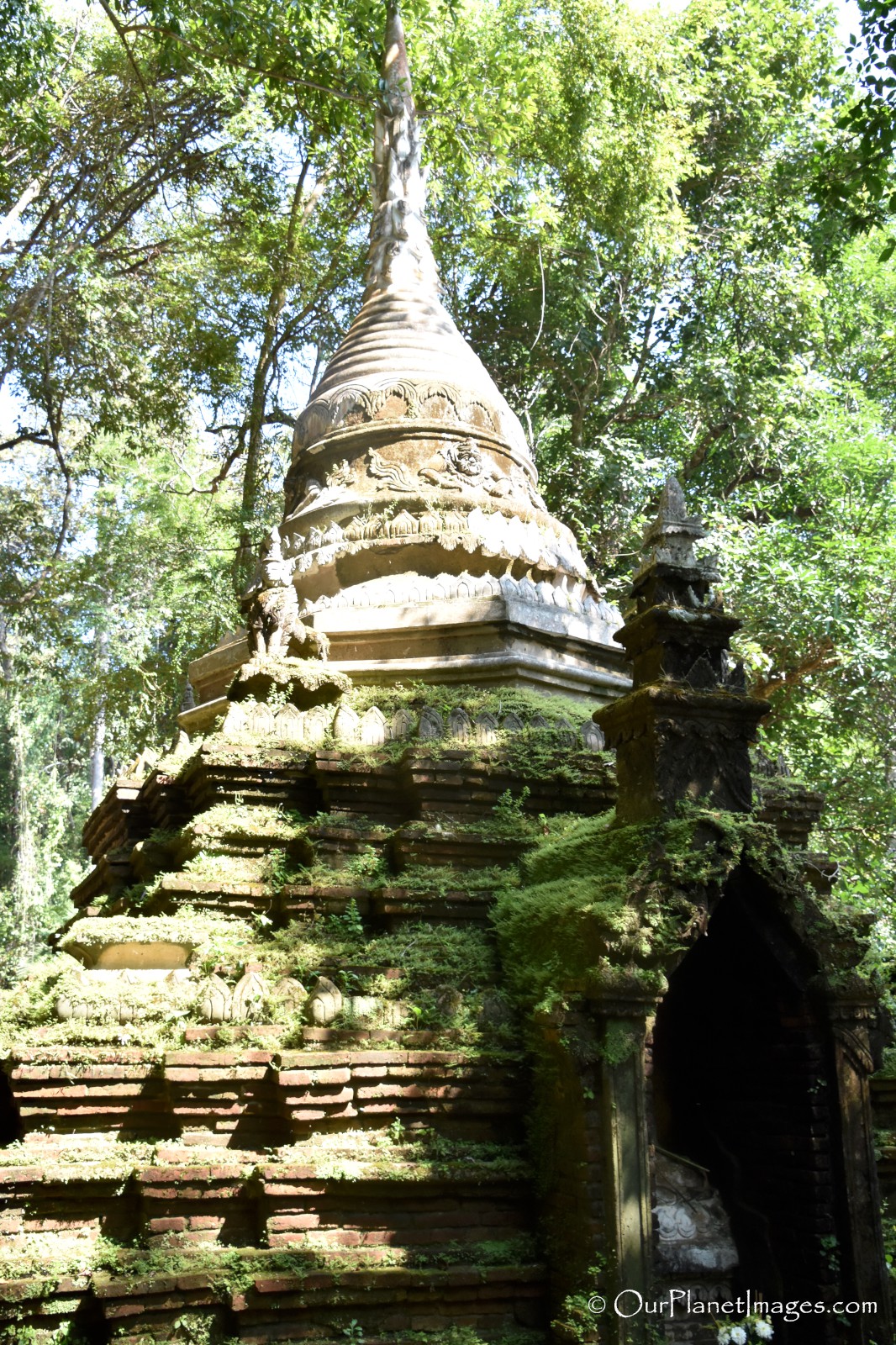
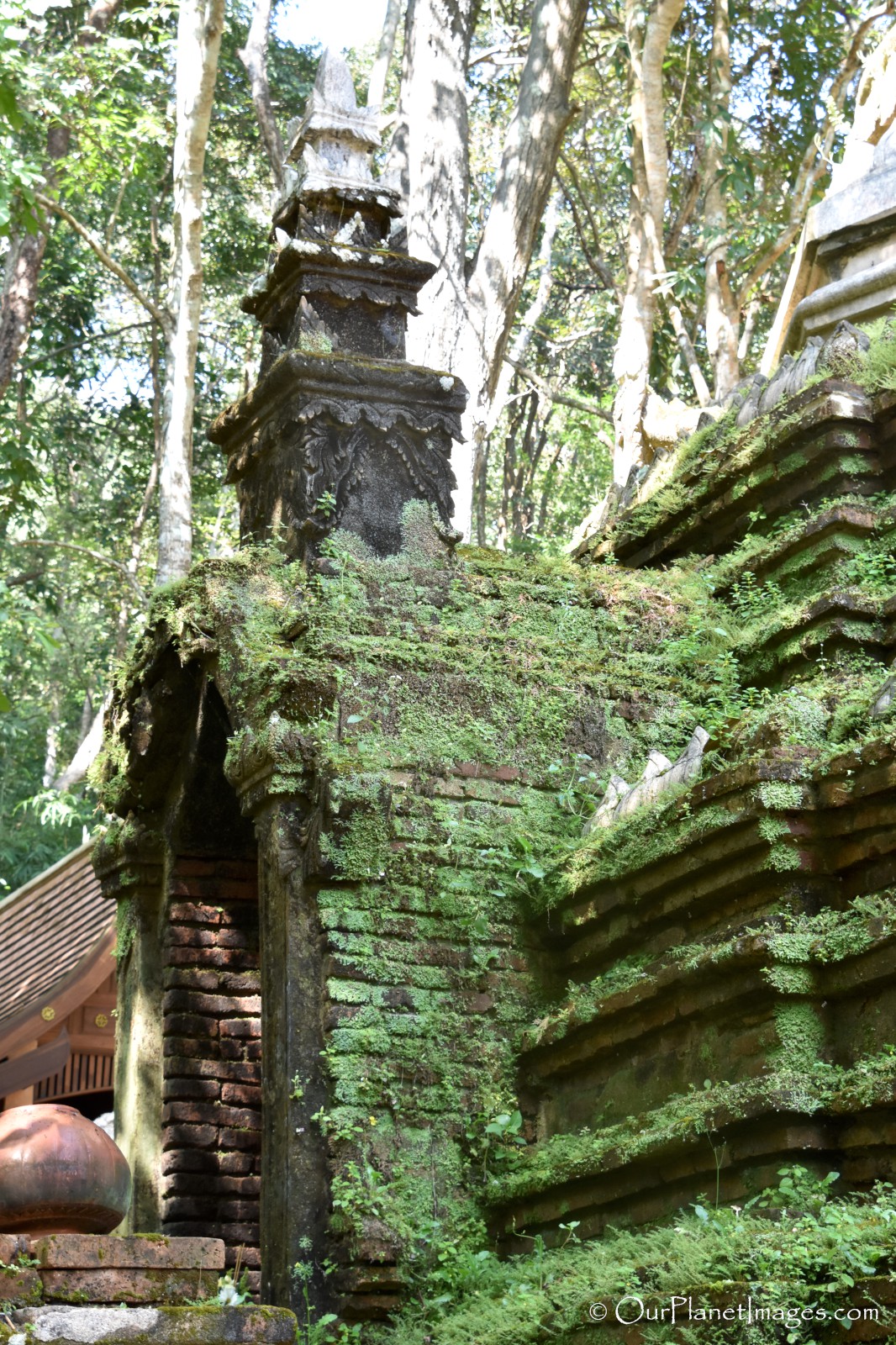
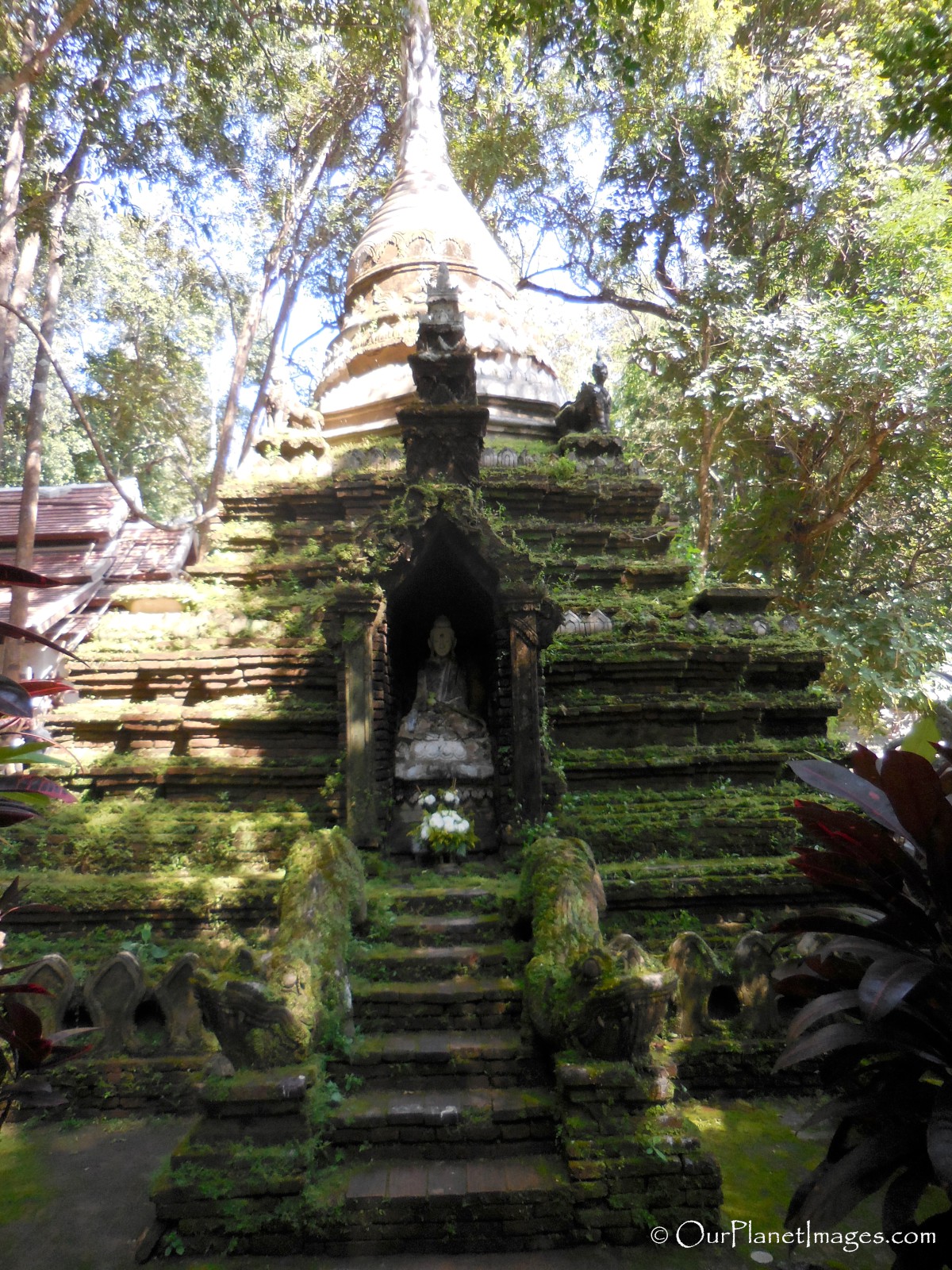
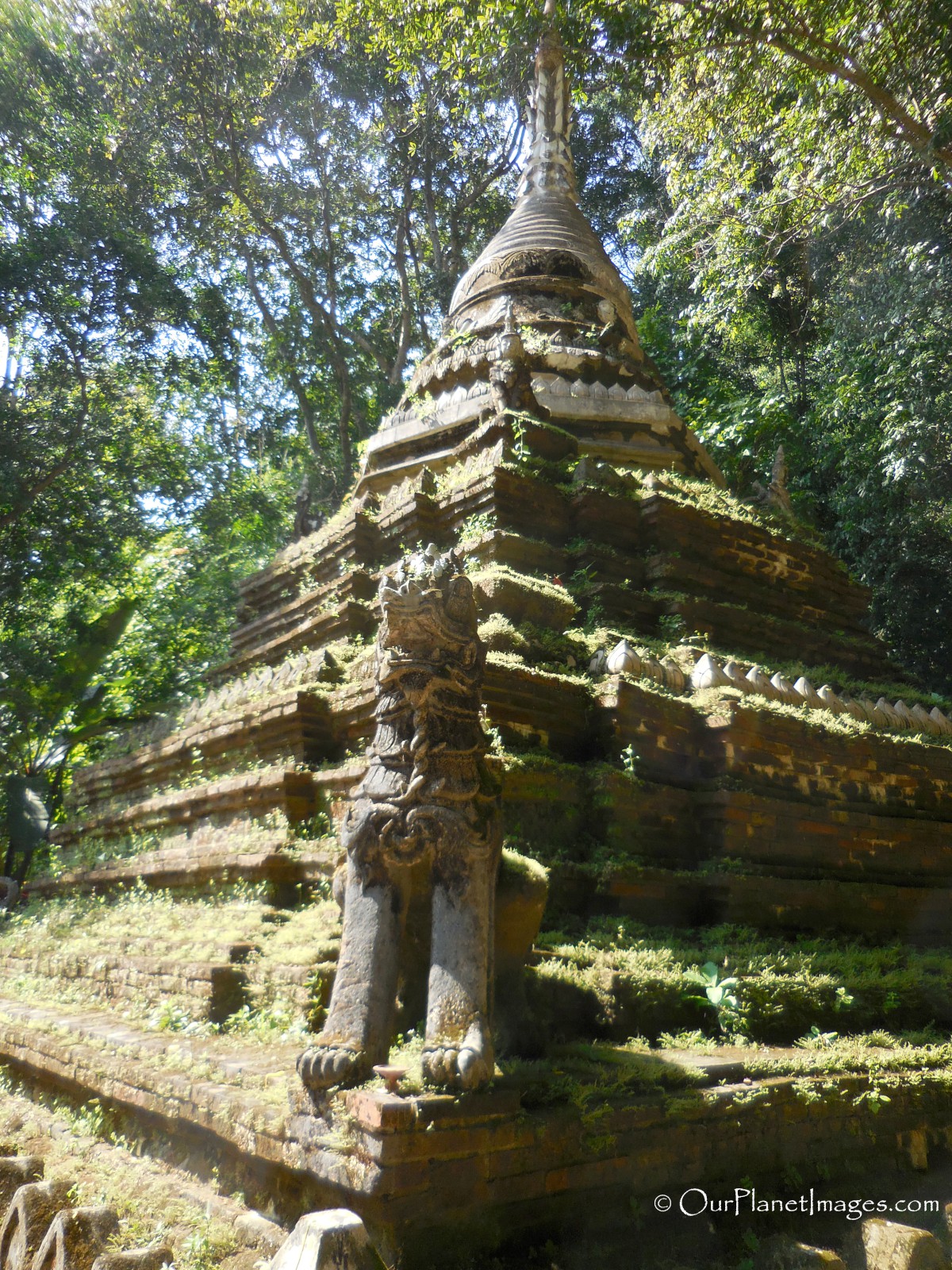
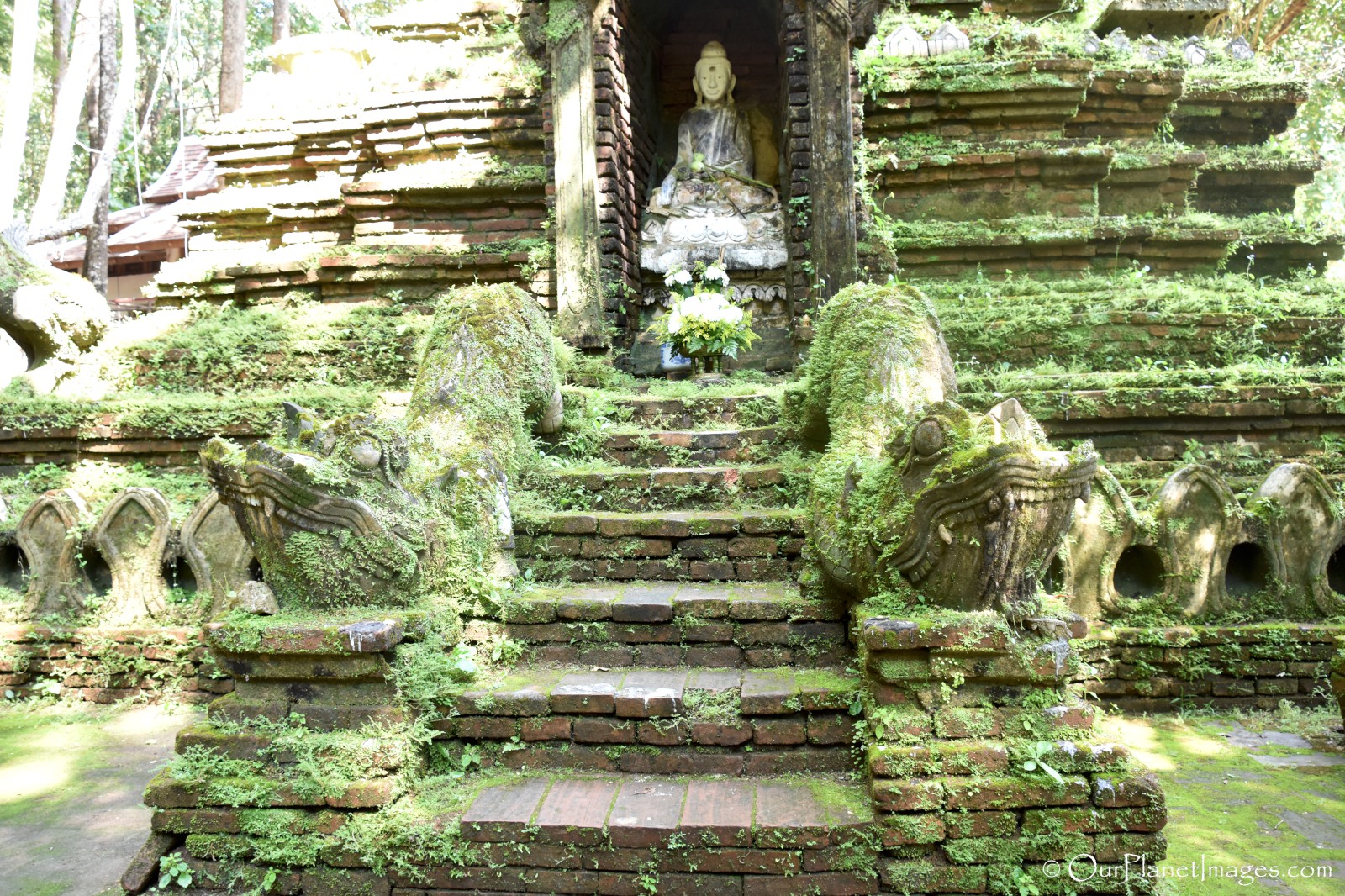
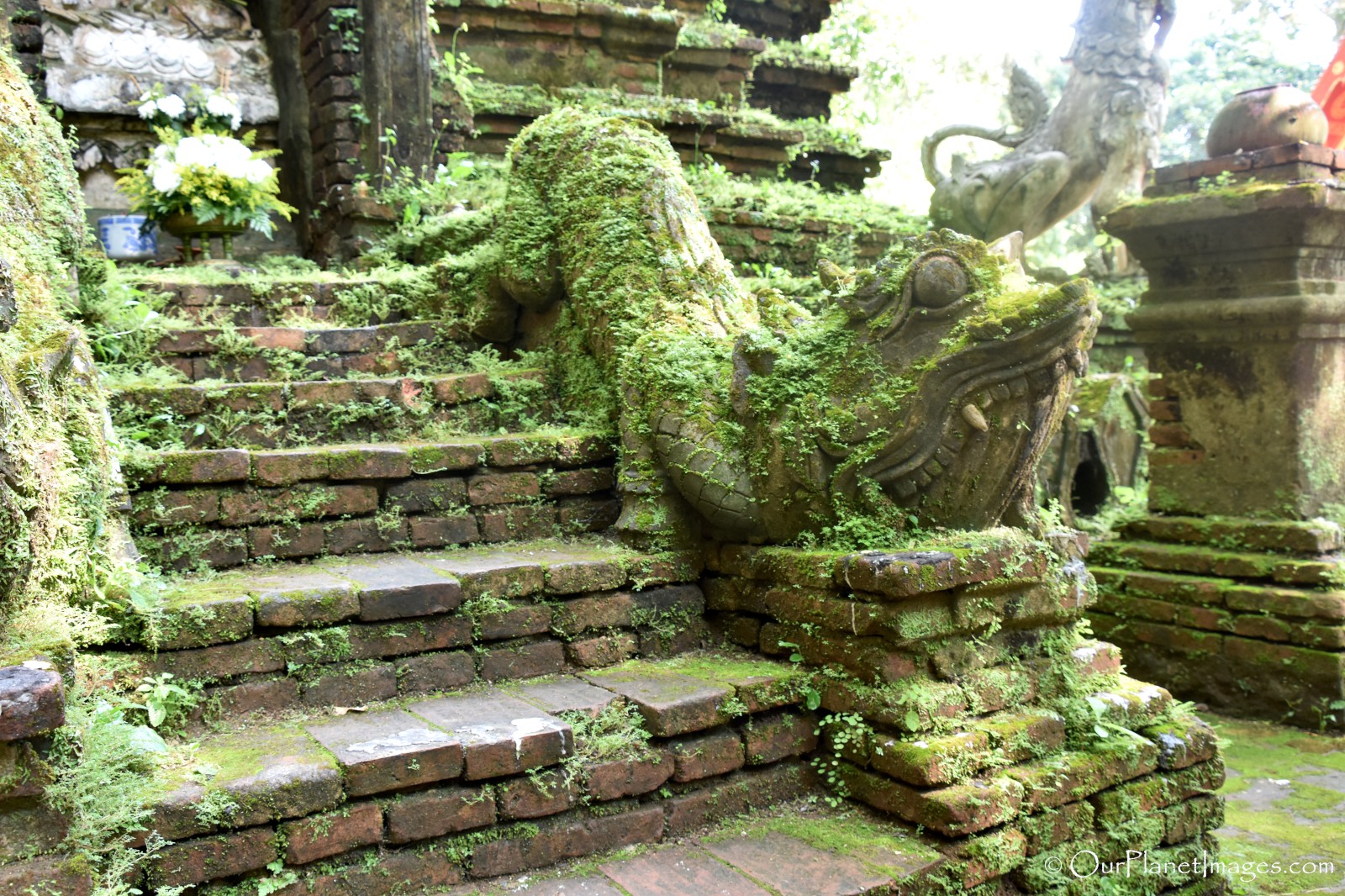
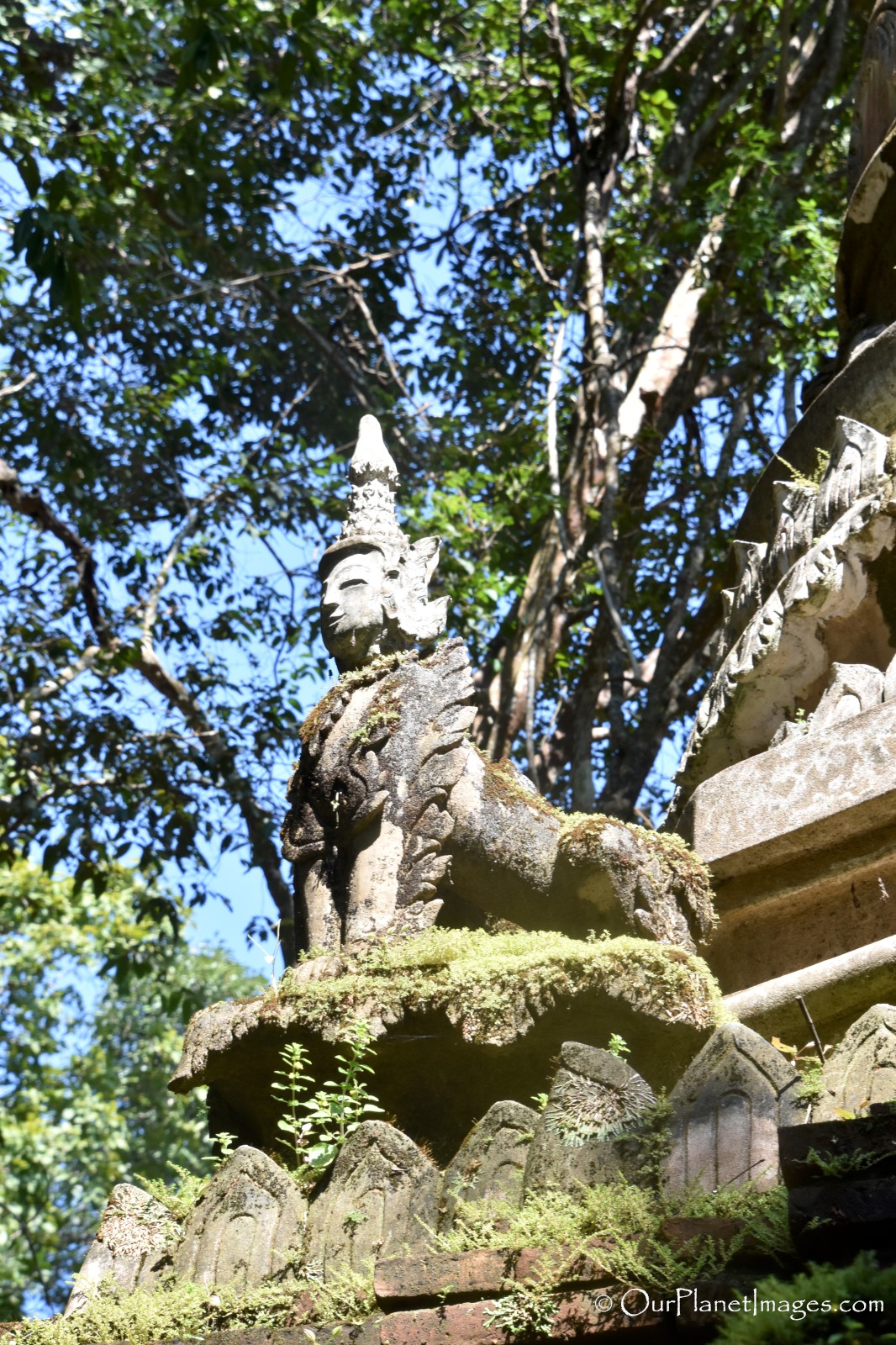
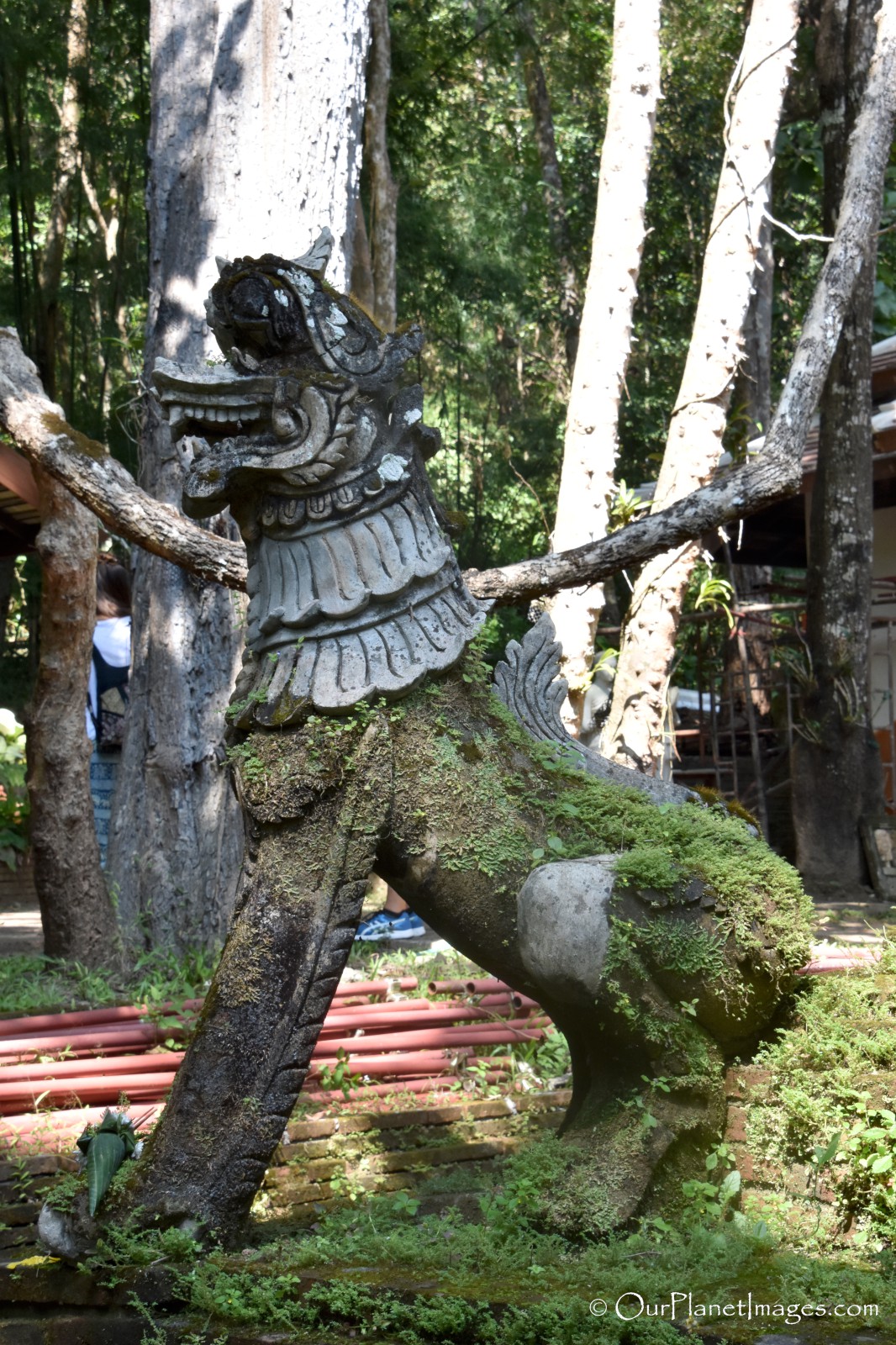
Other Temple Buildings
Aside from the main worship hall and the large stupa there are four smaller temple buildings. The largest of these buildings is an open air building with a large white setting Buddha statue and a smaller black Buddha statue on each side. These statues are under a covered roof.

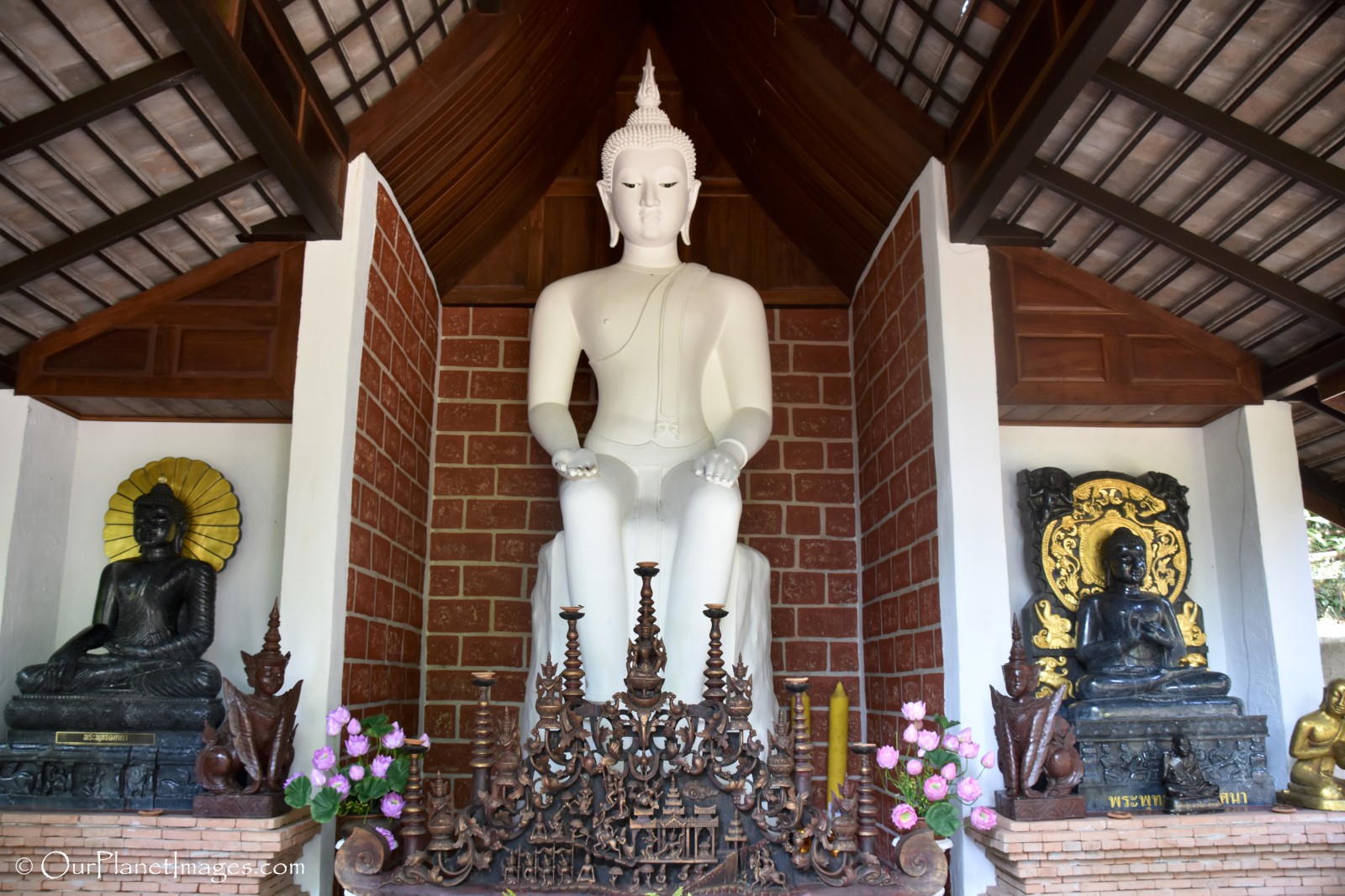
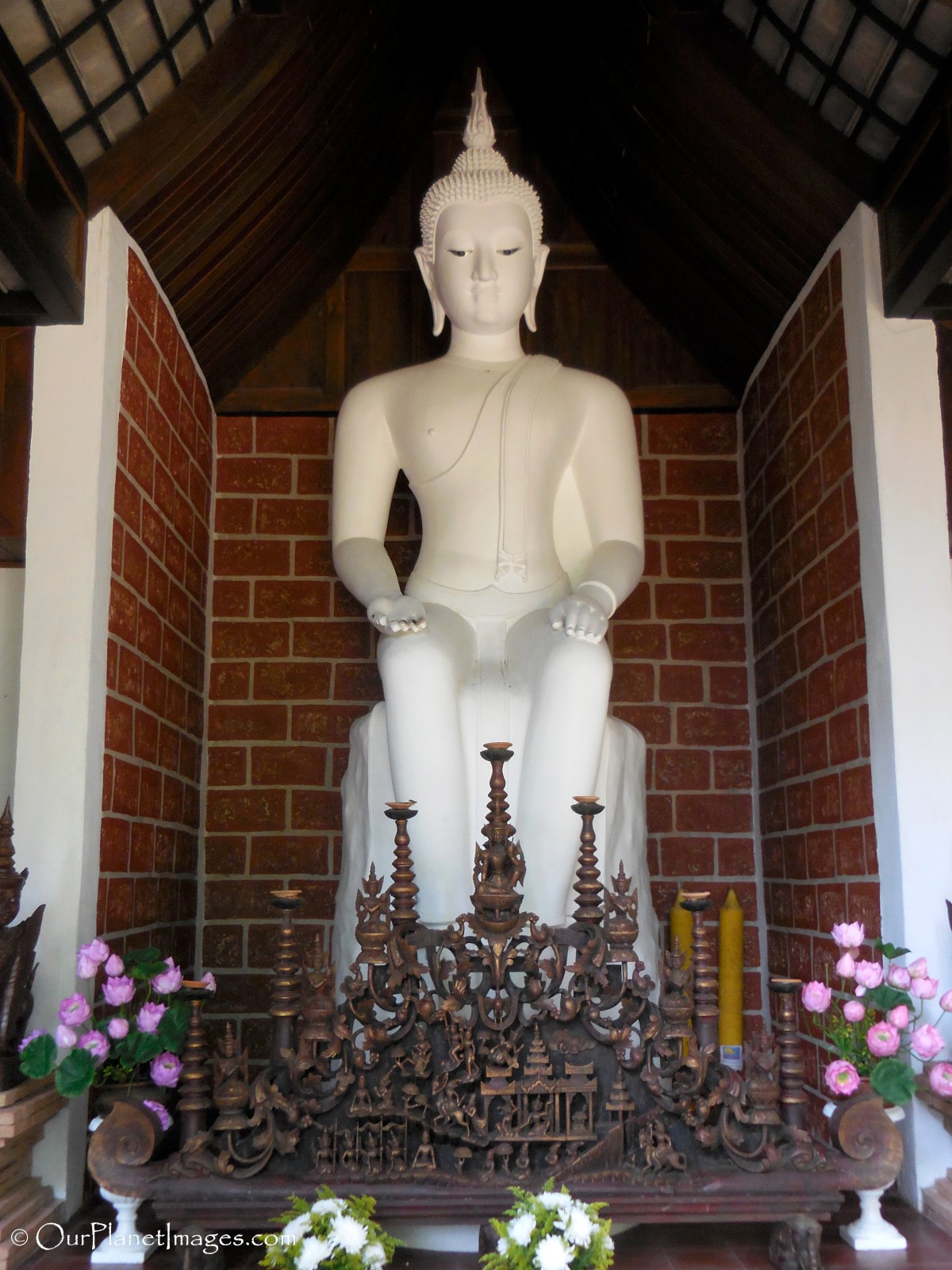
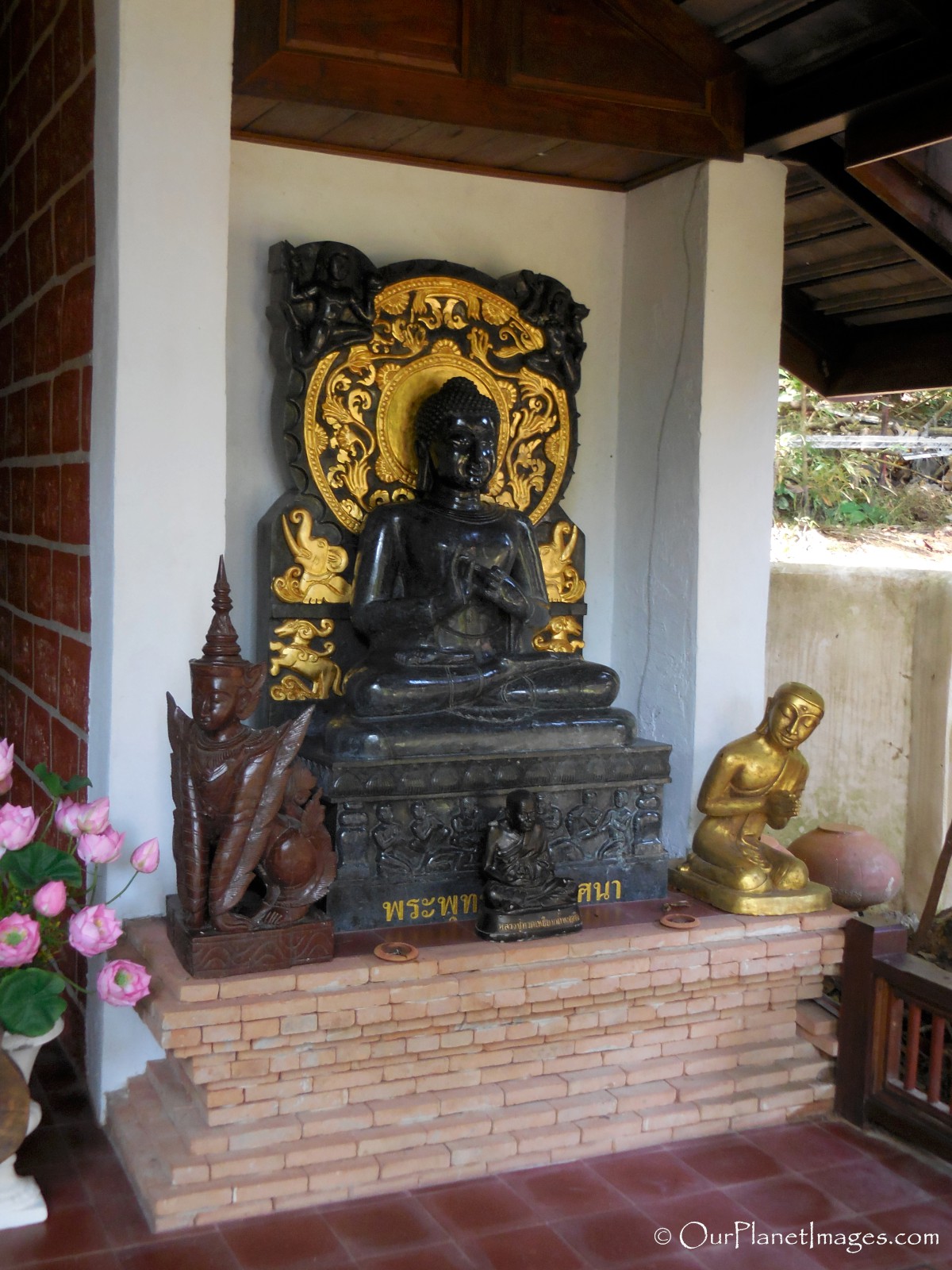
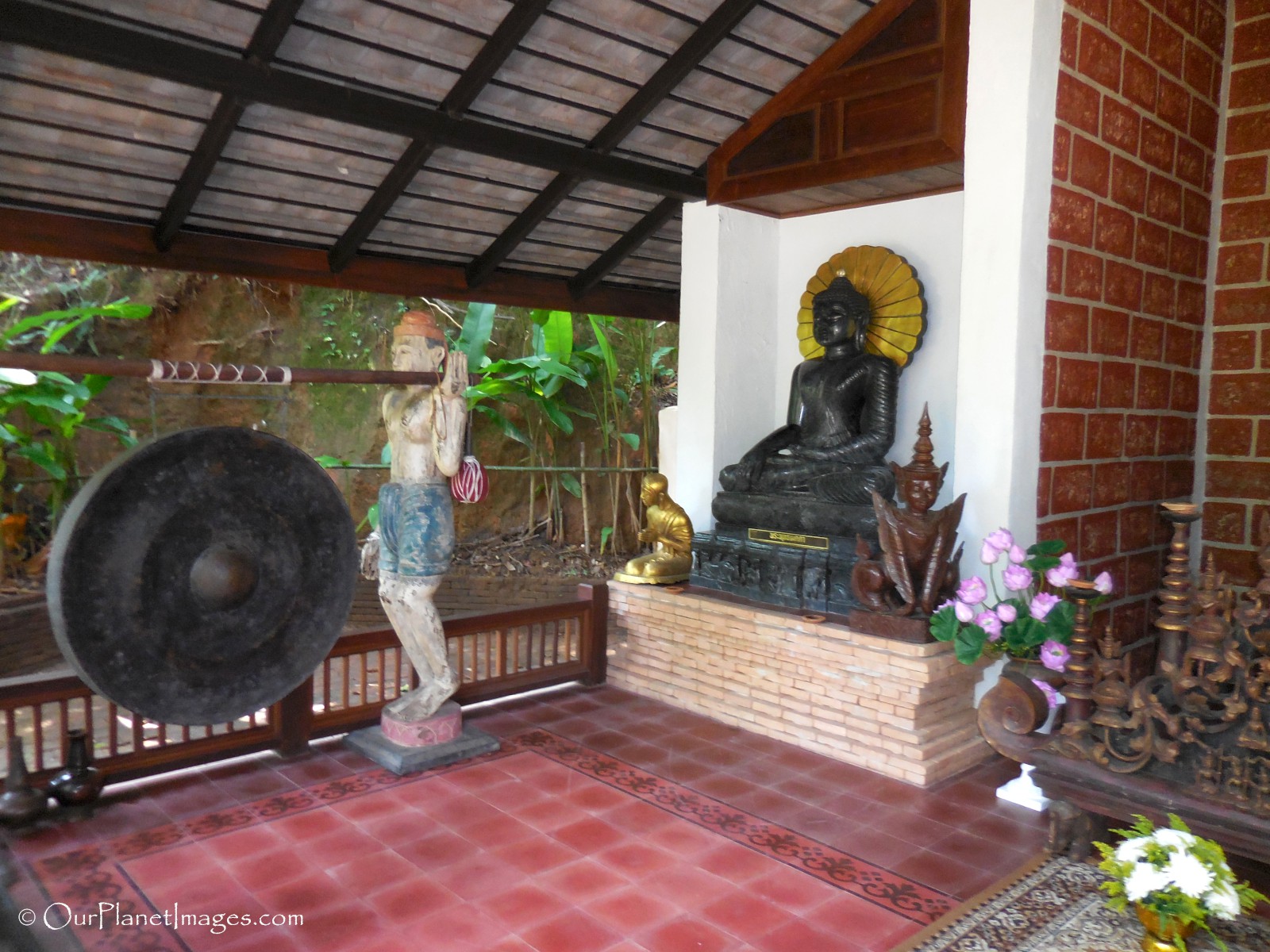
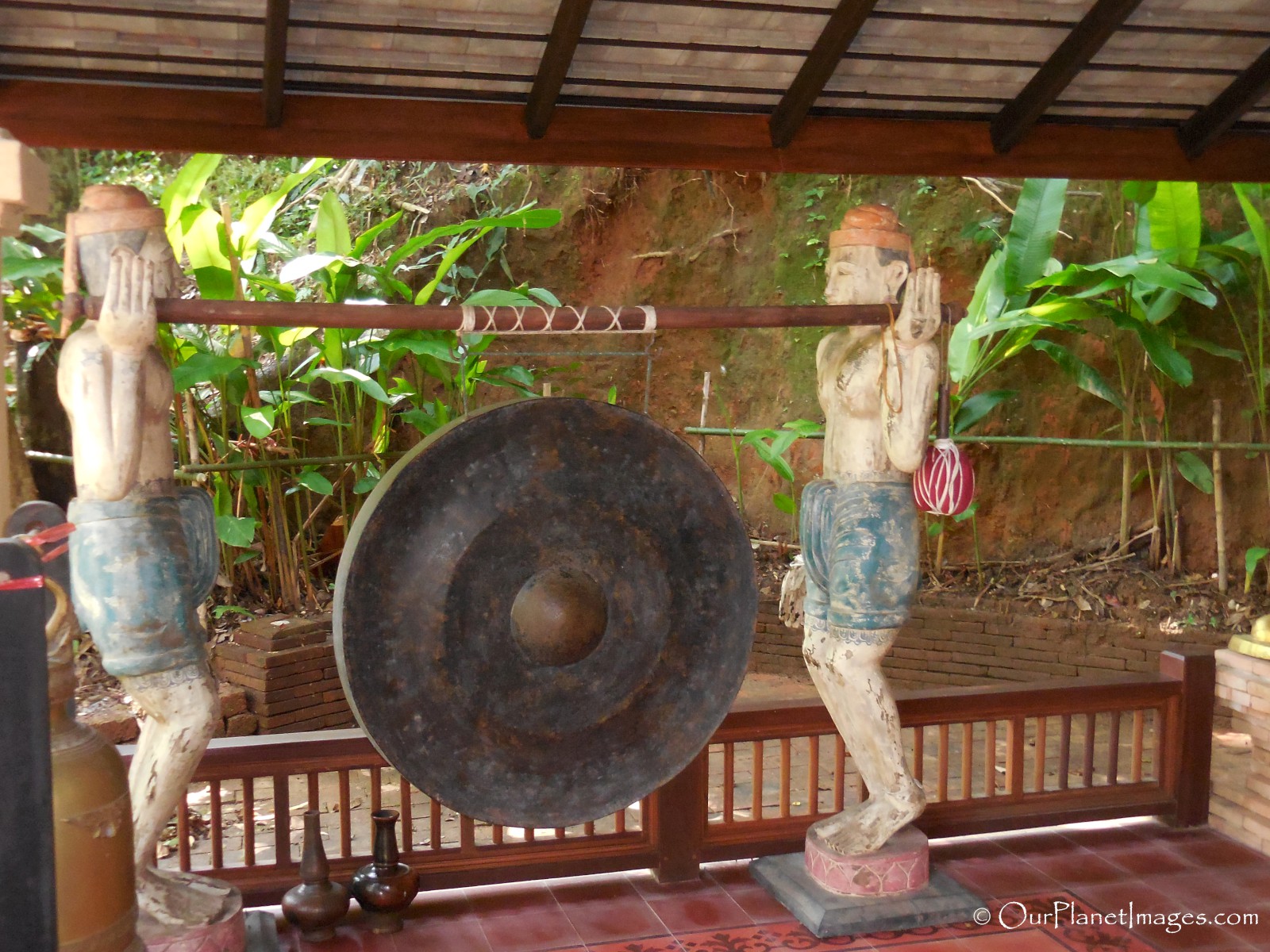
The second building is smaller and sits back away from the main area of the complex surrounded by large trees. A set of steps leads to the building with a set of statues marking the entrance.



The third building has a tiered roof and sits at the top of a stairs. The doors of building were closed so I don’t know what is on the inside but the doors are beautifully decorated.
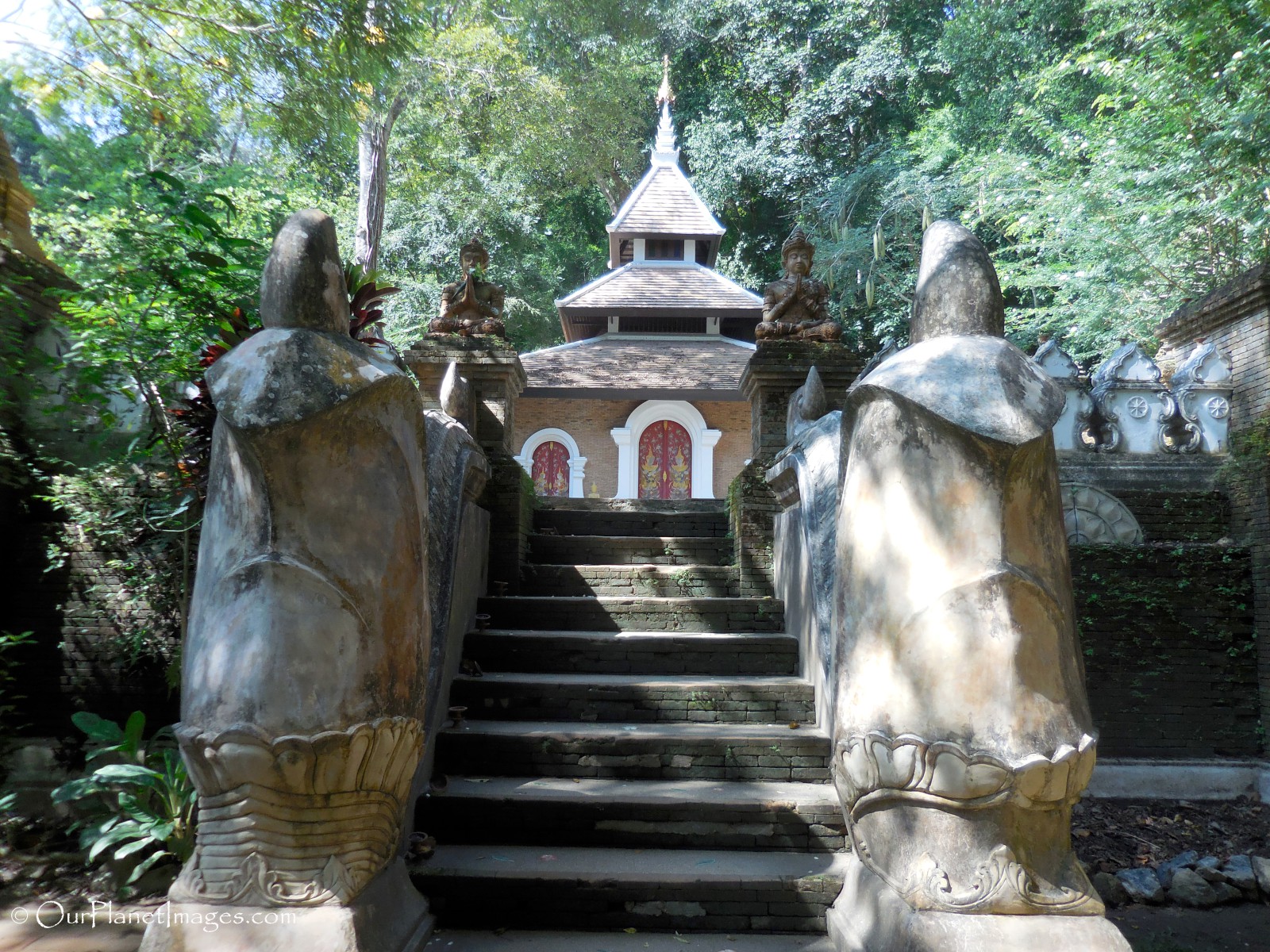

The final building is a six sided gazebo with standing statues on each side.
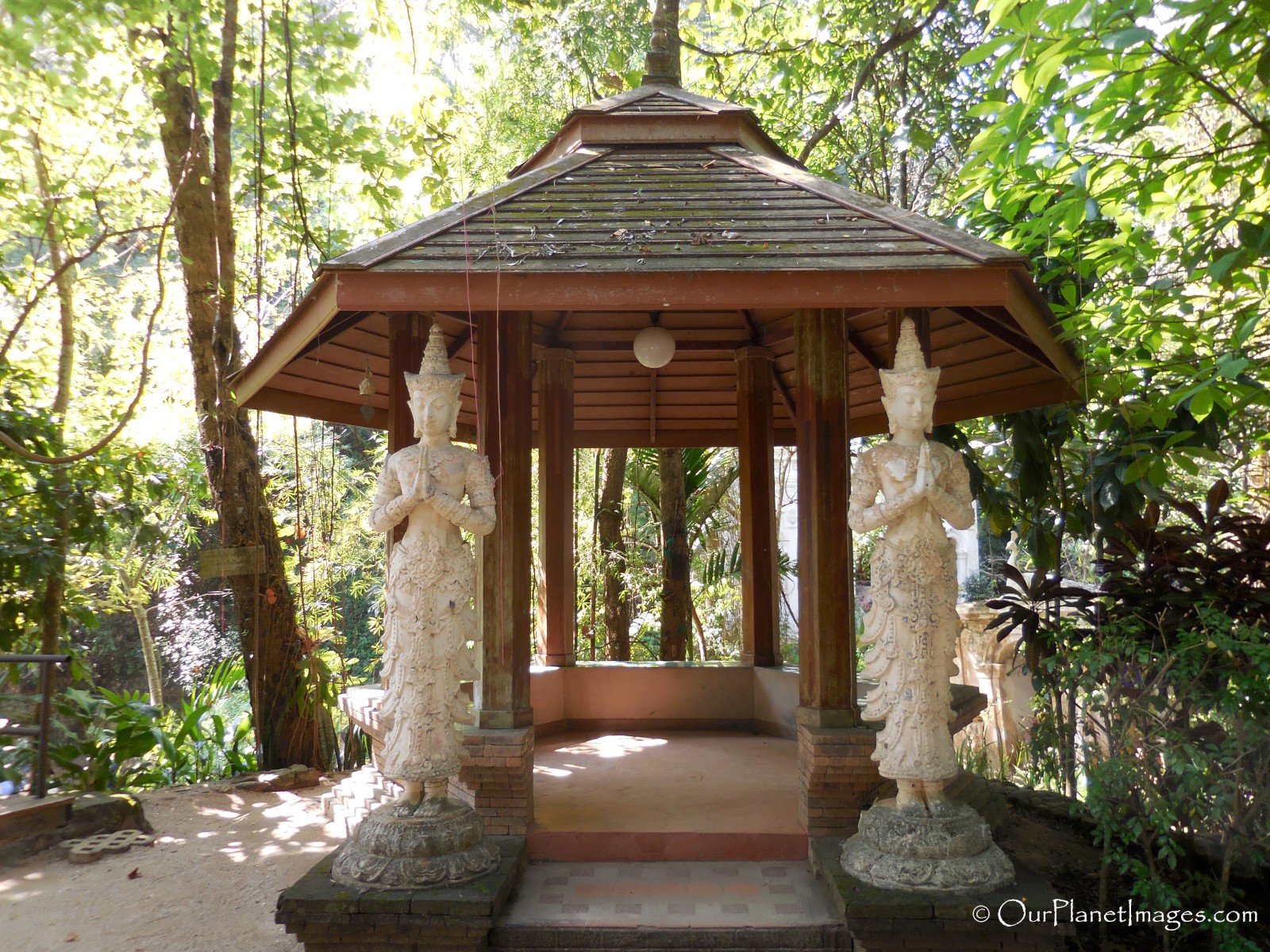
Four sided Head
One of the features that I found interesting were two four sided head statues. One was almost completely covered in vegetation and the other was more easily reachable.
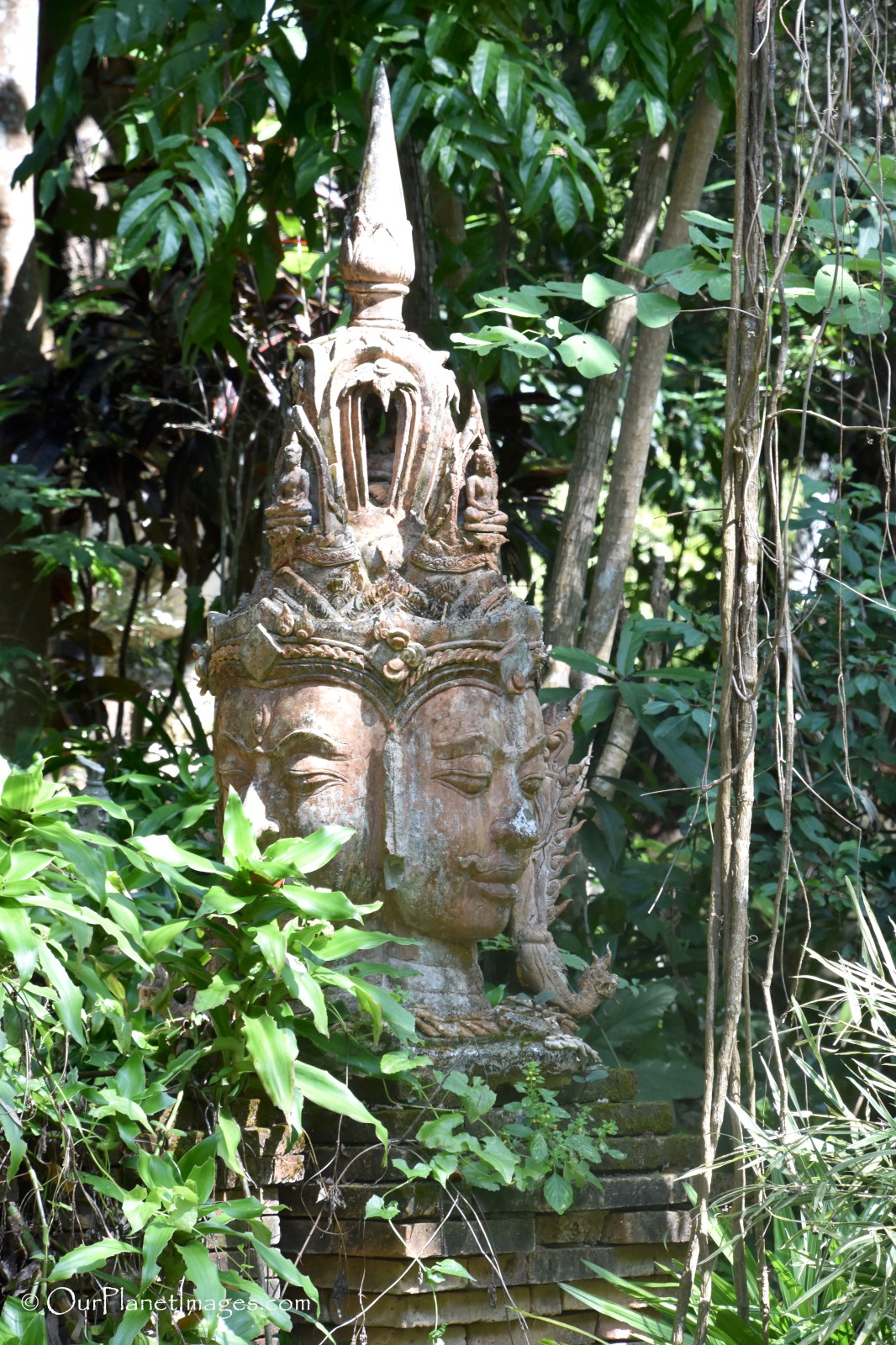

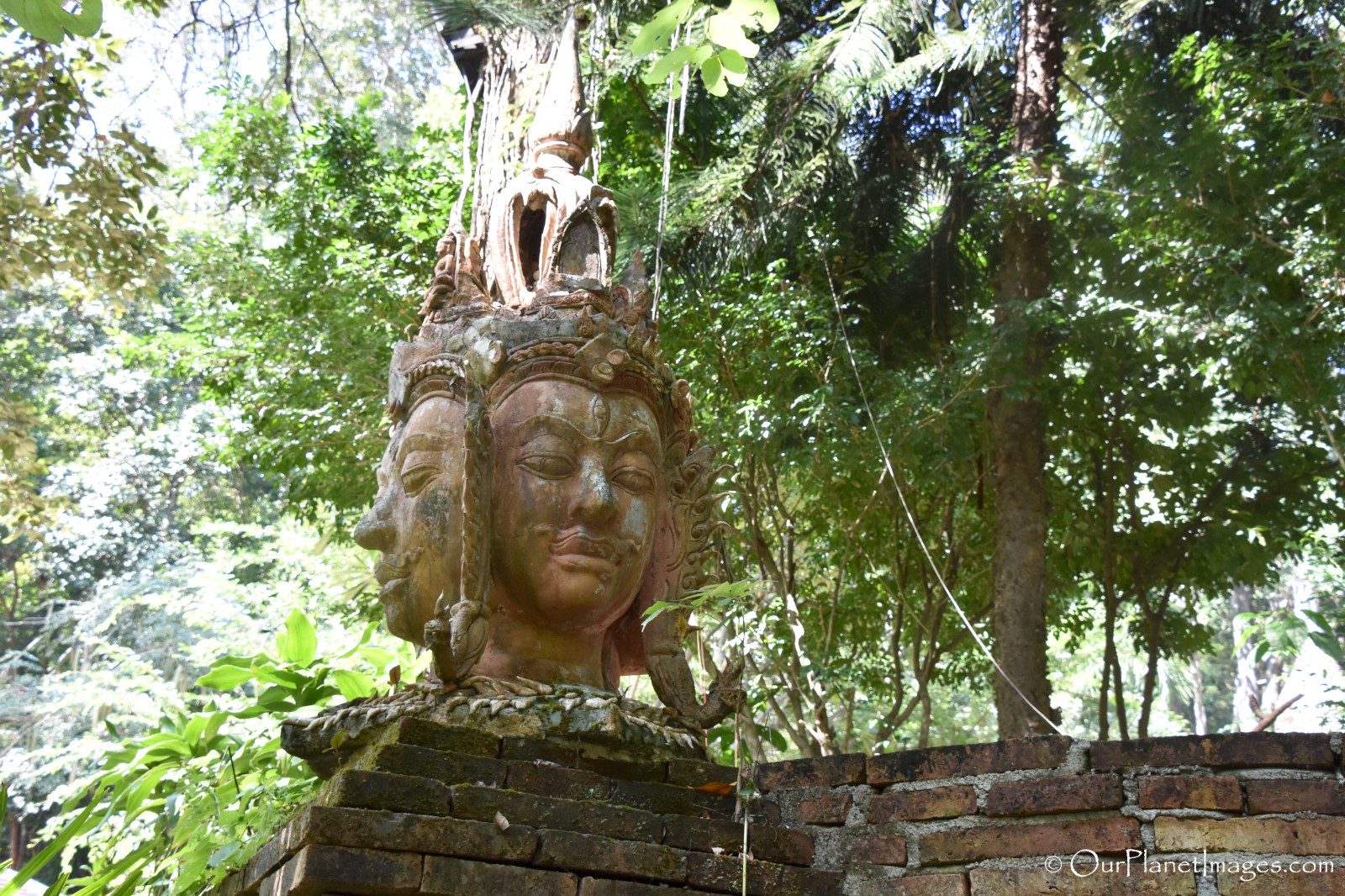
Cave with Buddha statues
The temple is on a hilly landscape in the jungle and some of the places in the temple require a little exploring to find. This is the case with the small cave that contains several cloaked Buddha statues.
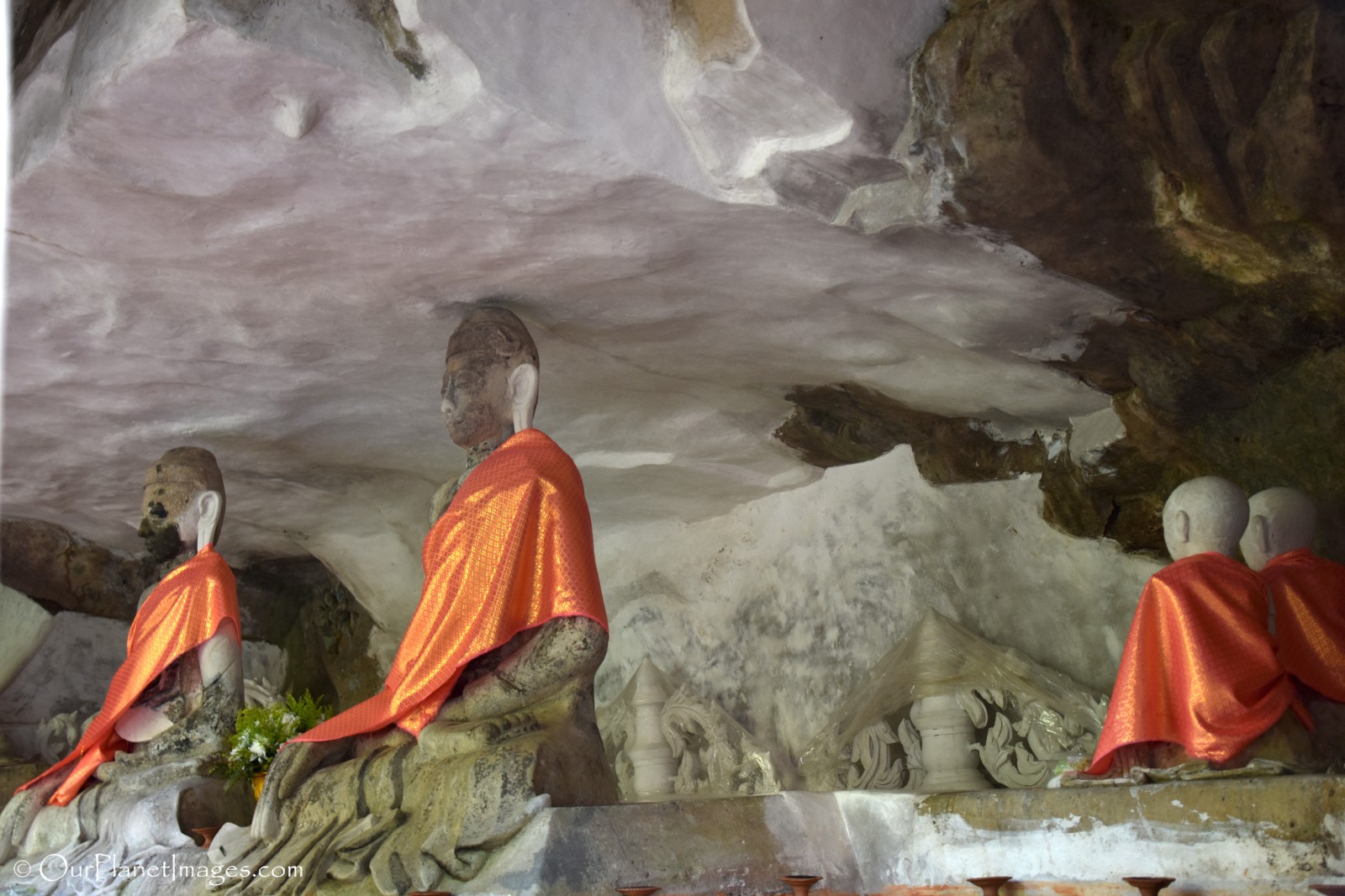
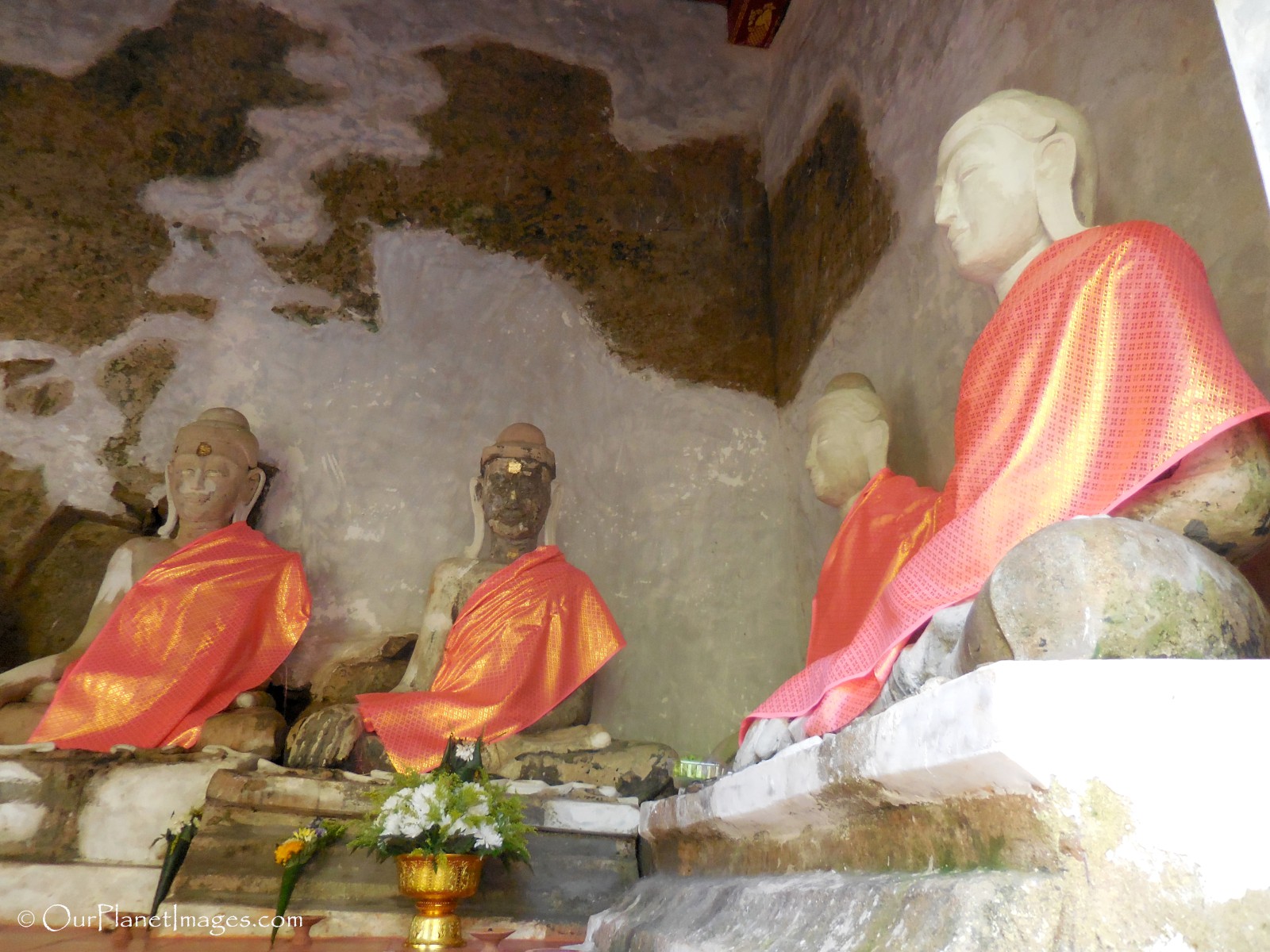
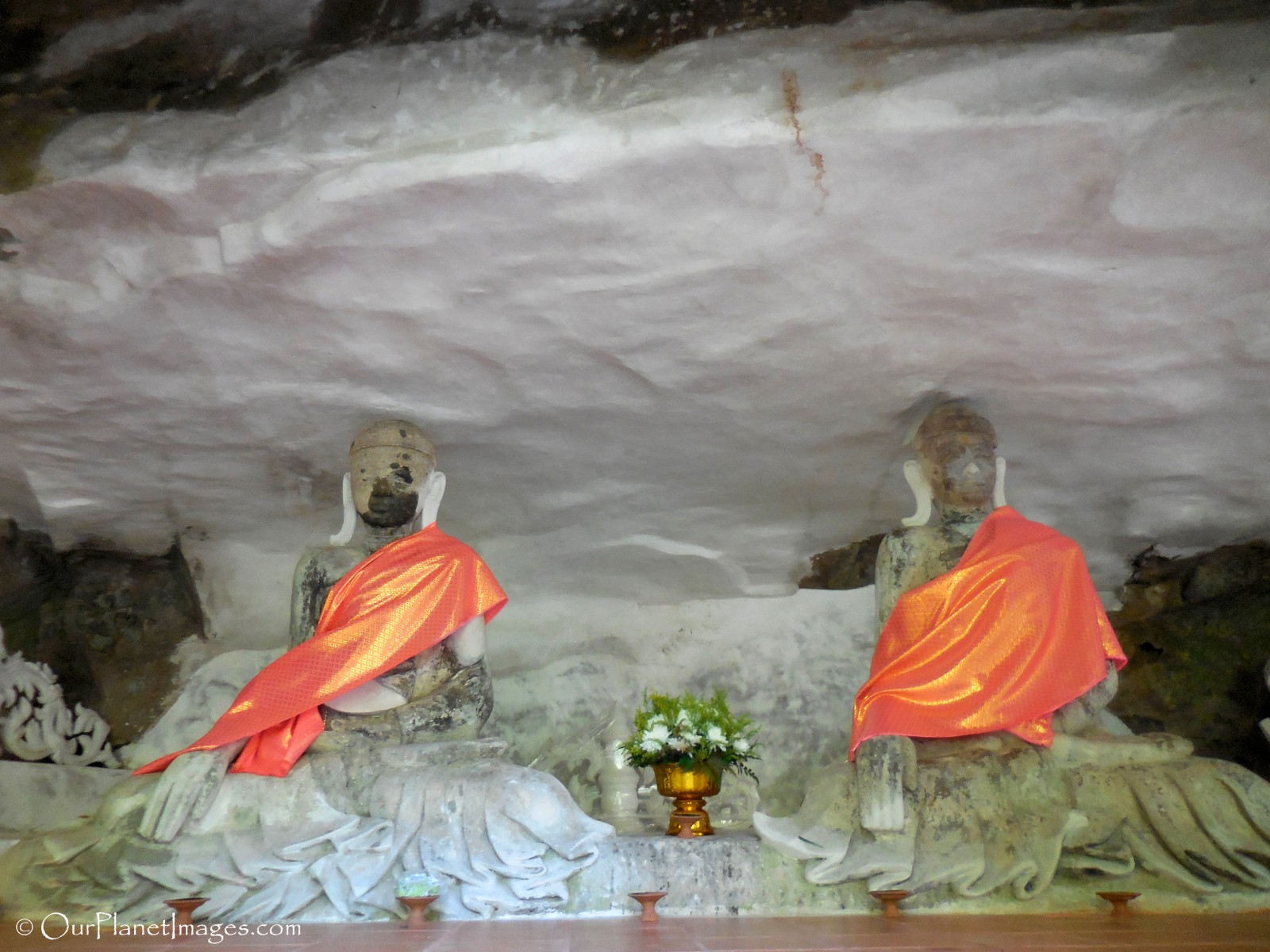


Monks’ trail entrance
The monks’ trail emerges from the jungle at the lower end of the temple complex. There are two sets of stairs that leads to the temple buildings. The first site of the temple complex is a long naga (serpent) flanked staircase. The serpents are mostly white with some colored pieces of glass on the scales, beard and around the mouth.
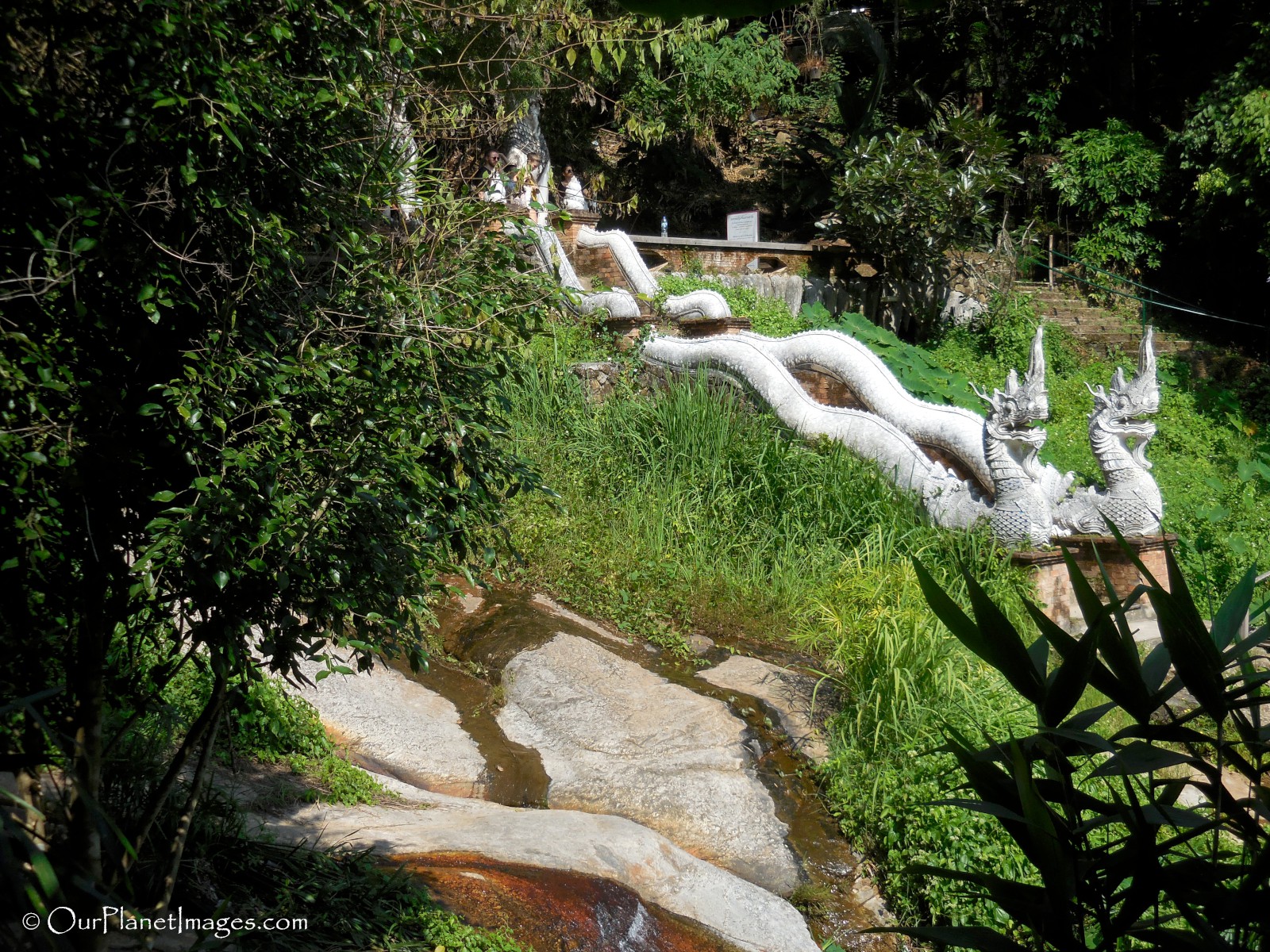


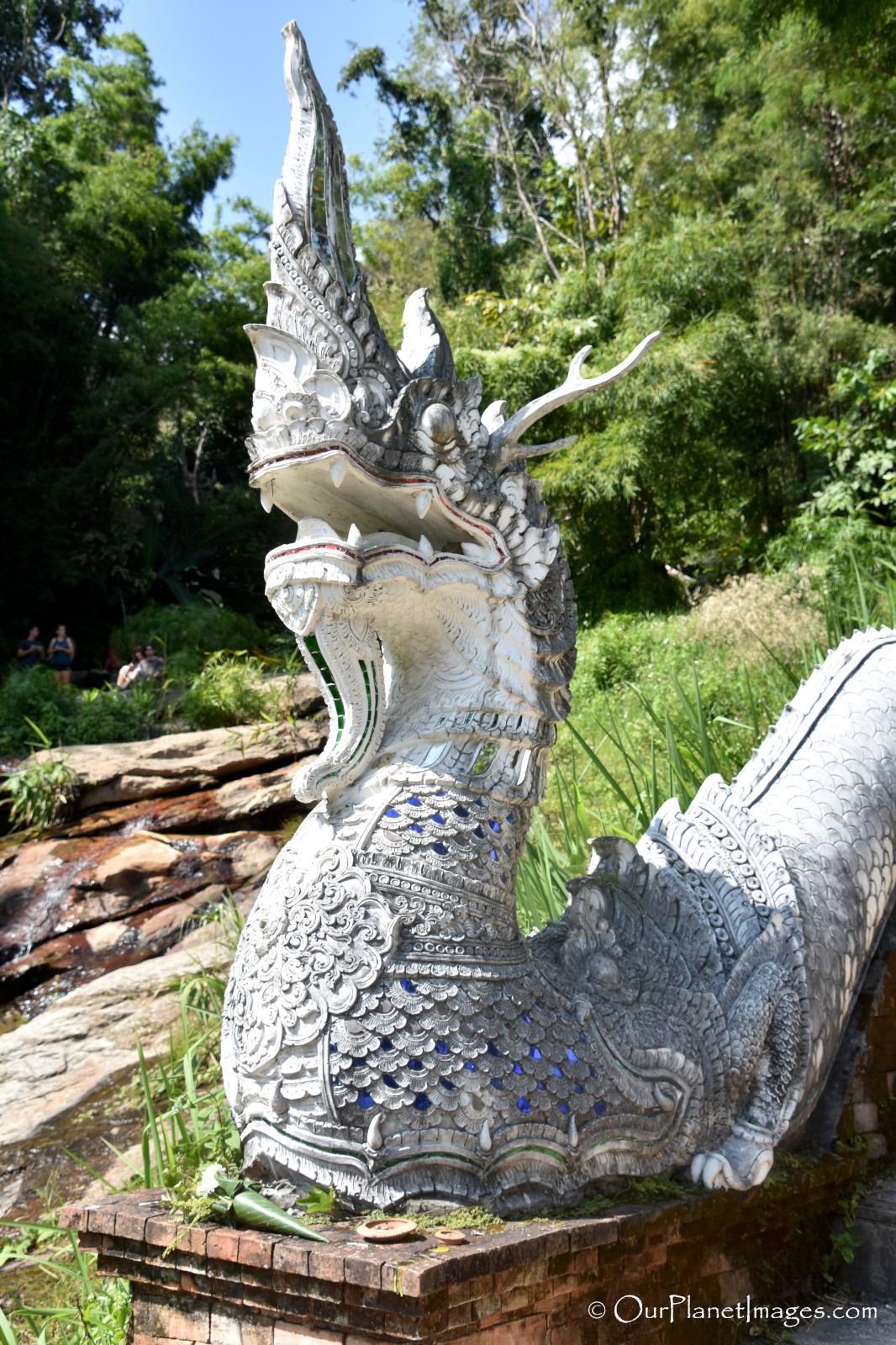
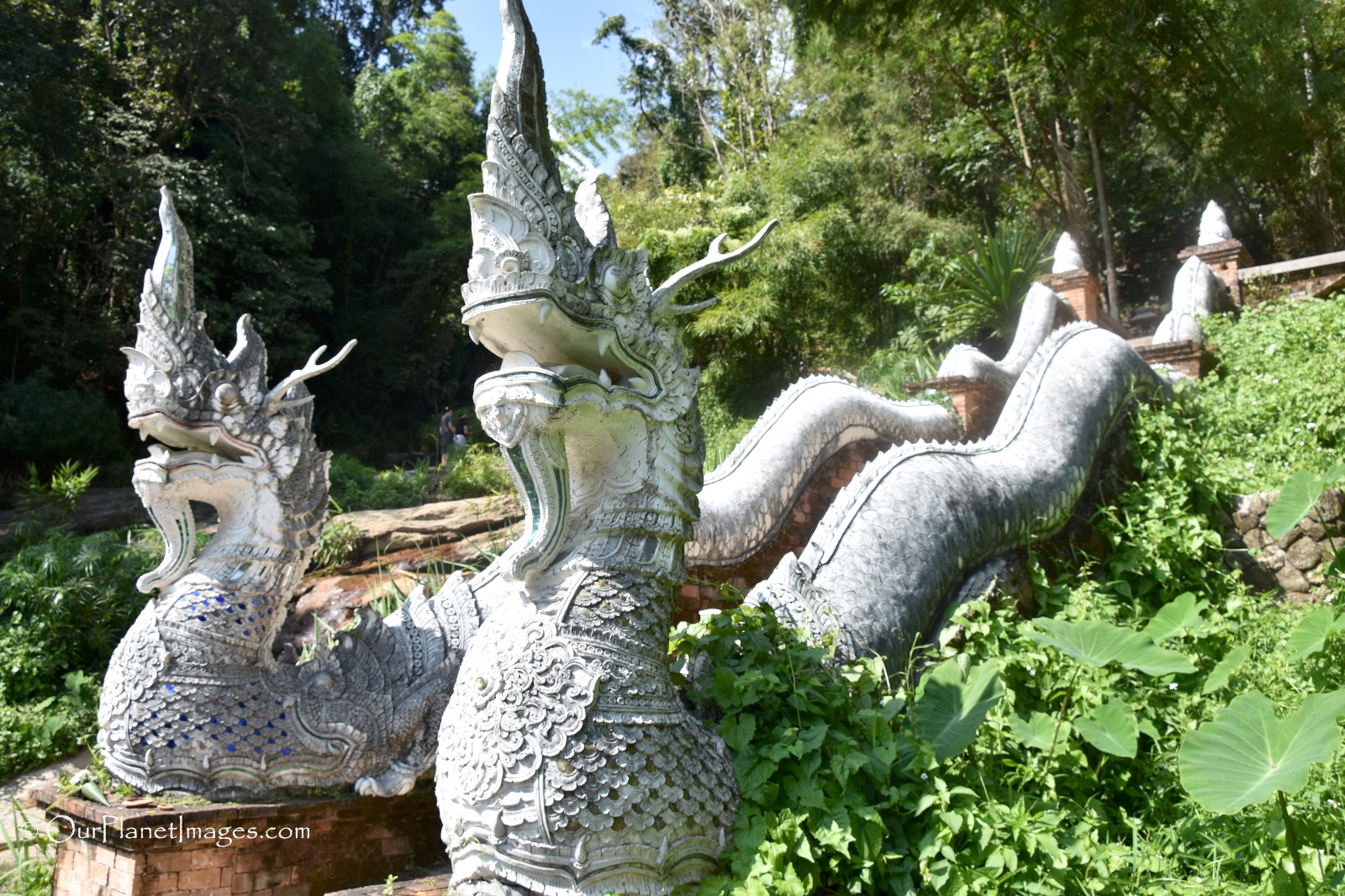

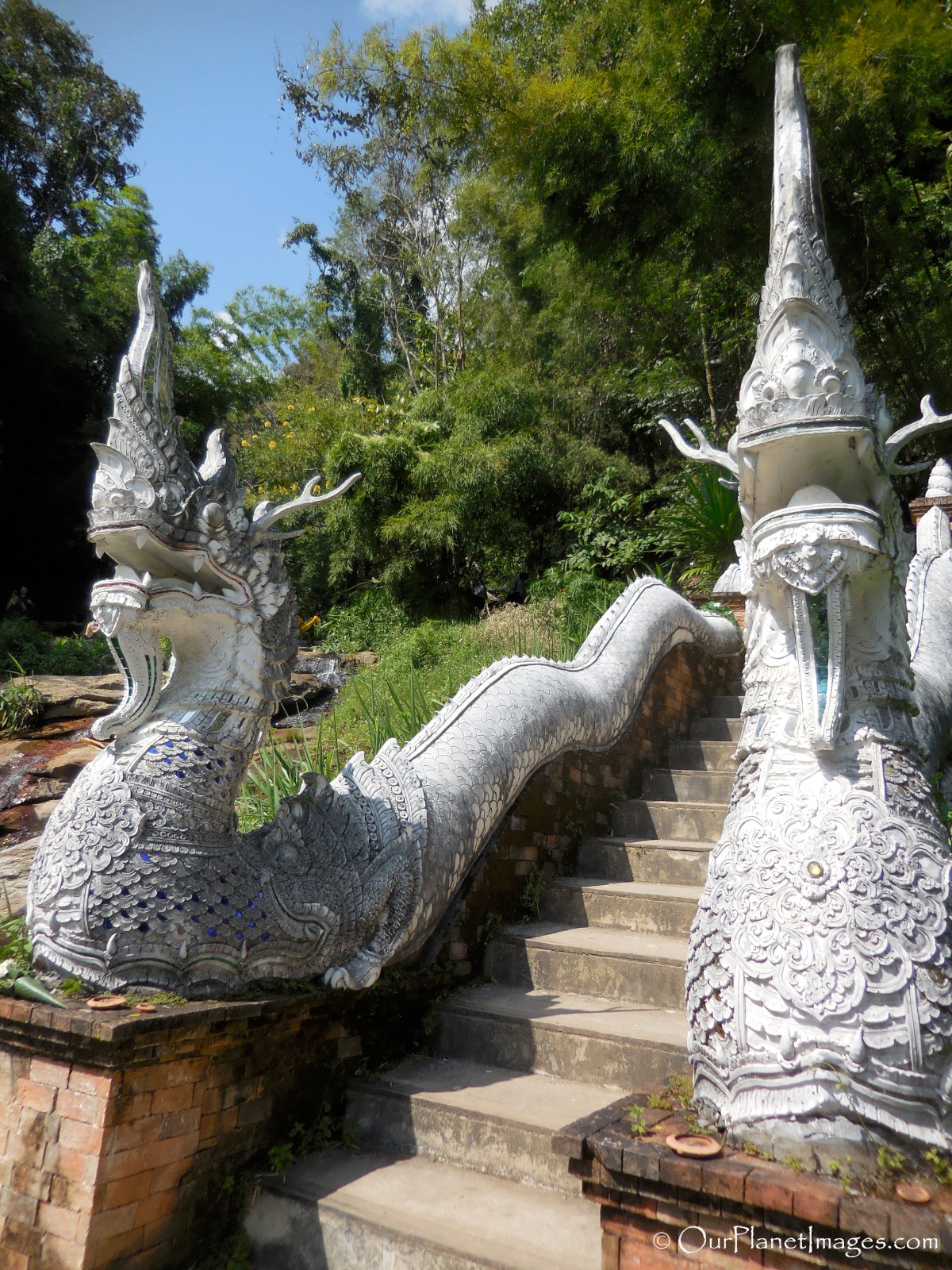
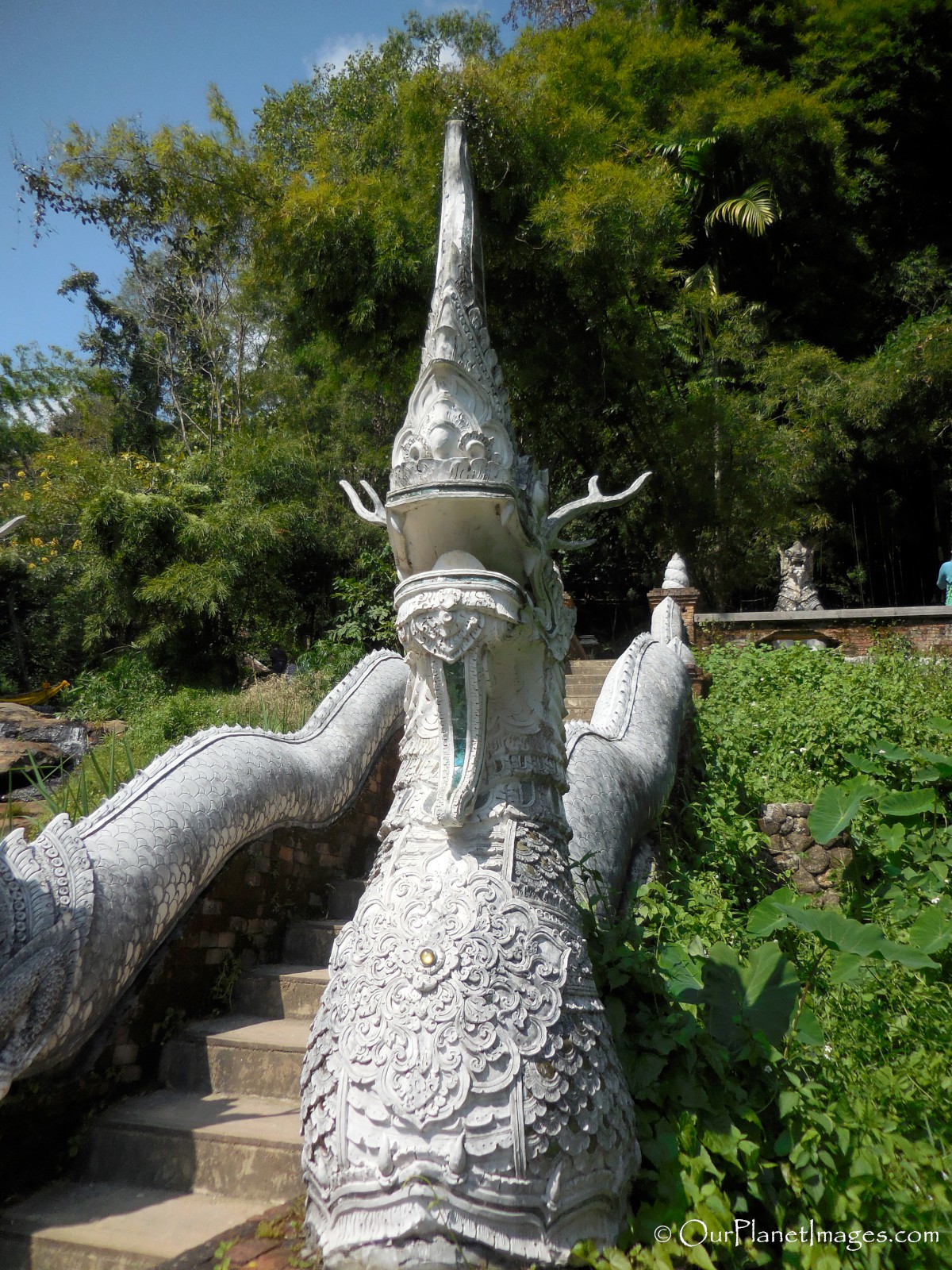
The upper staircase is shorter but it feels like a mysterious entrance to a jungle temple. Two large white statues appear to guard the entrance from unwanted visitors. Vines hang down from above the stair steps and small religious statues kneeling in the prayer position are on both sides of the steps. At the top of the stairs are small statues of elephants. Just outside the stairs are tall green bamboo that come together above the stairs which creates a tunnel for visitor entering the temple complex.
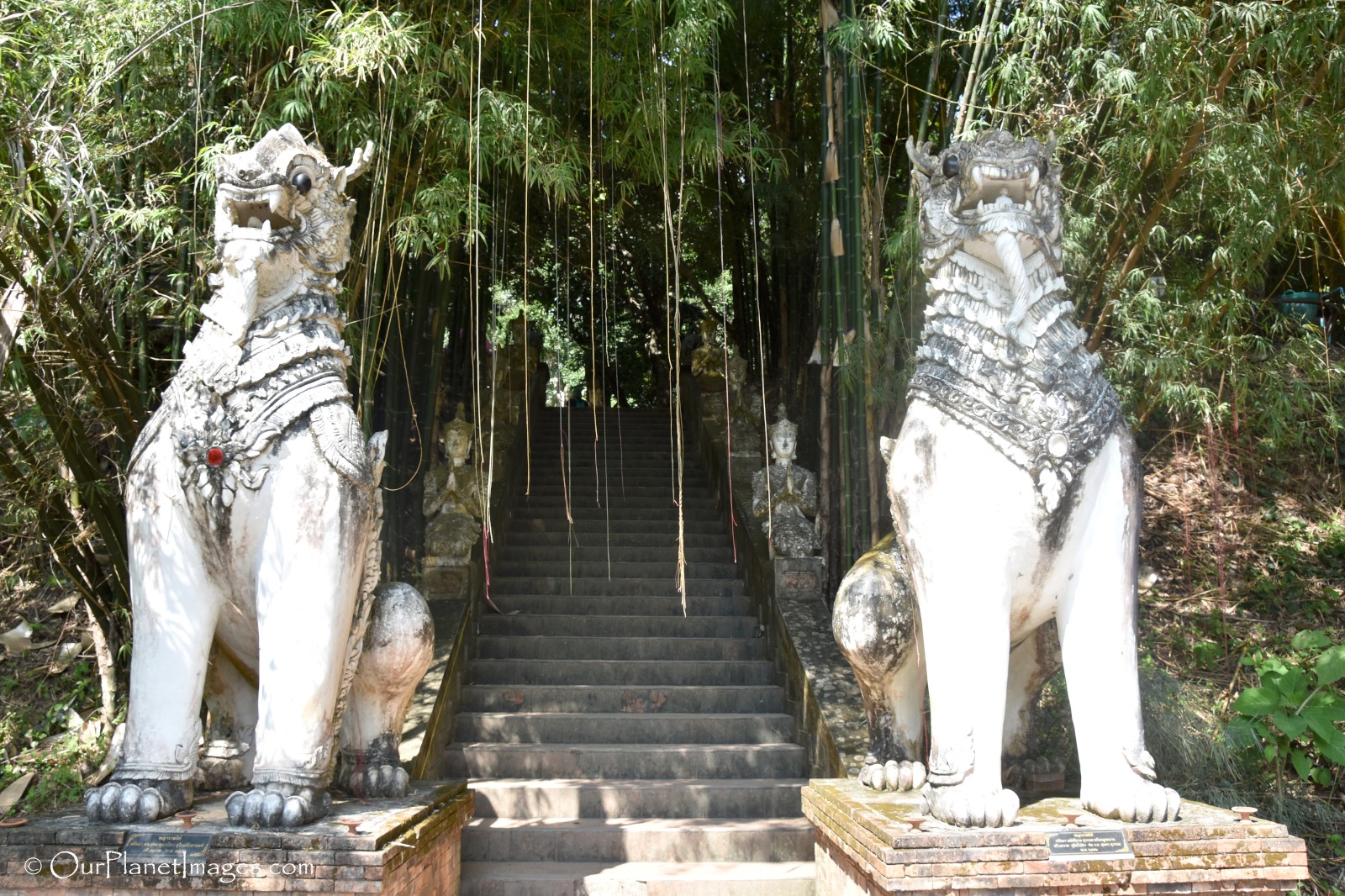


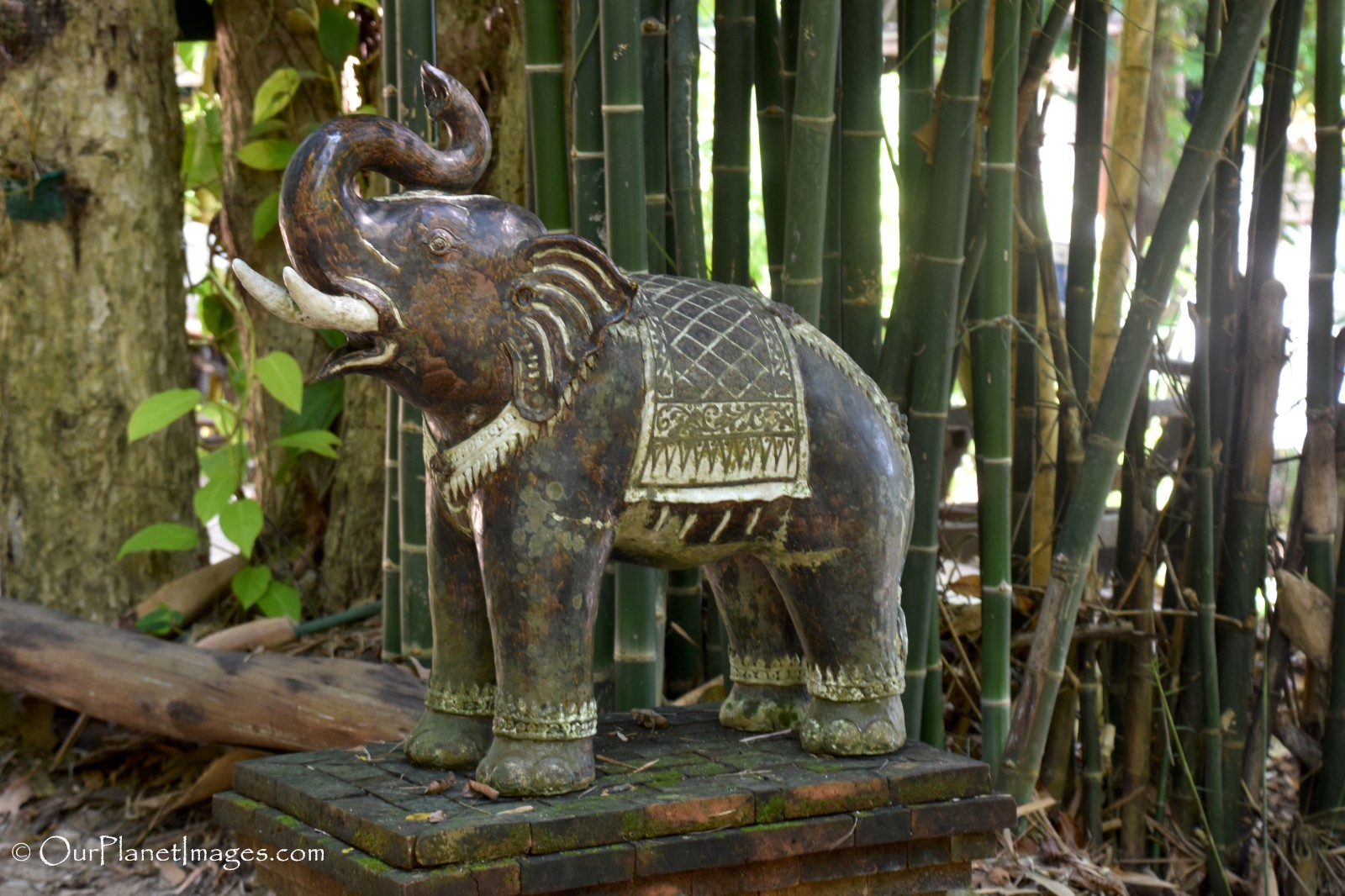
Standing Buddha Statue
Near the entrance of the temple from the monks’ trail stands a giant Buddha statue welcoming all who visit. The statue is an invitation of visitor to pray before entering the complex and it sets the tone that you are entering a calm and peaceful place.
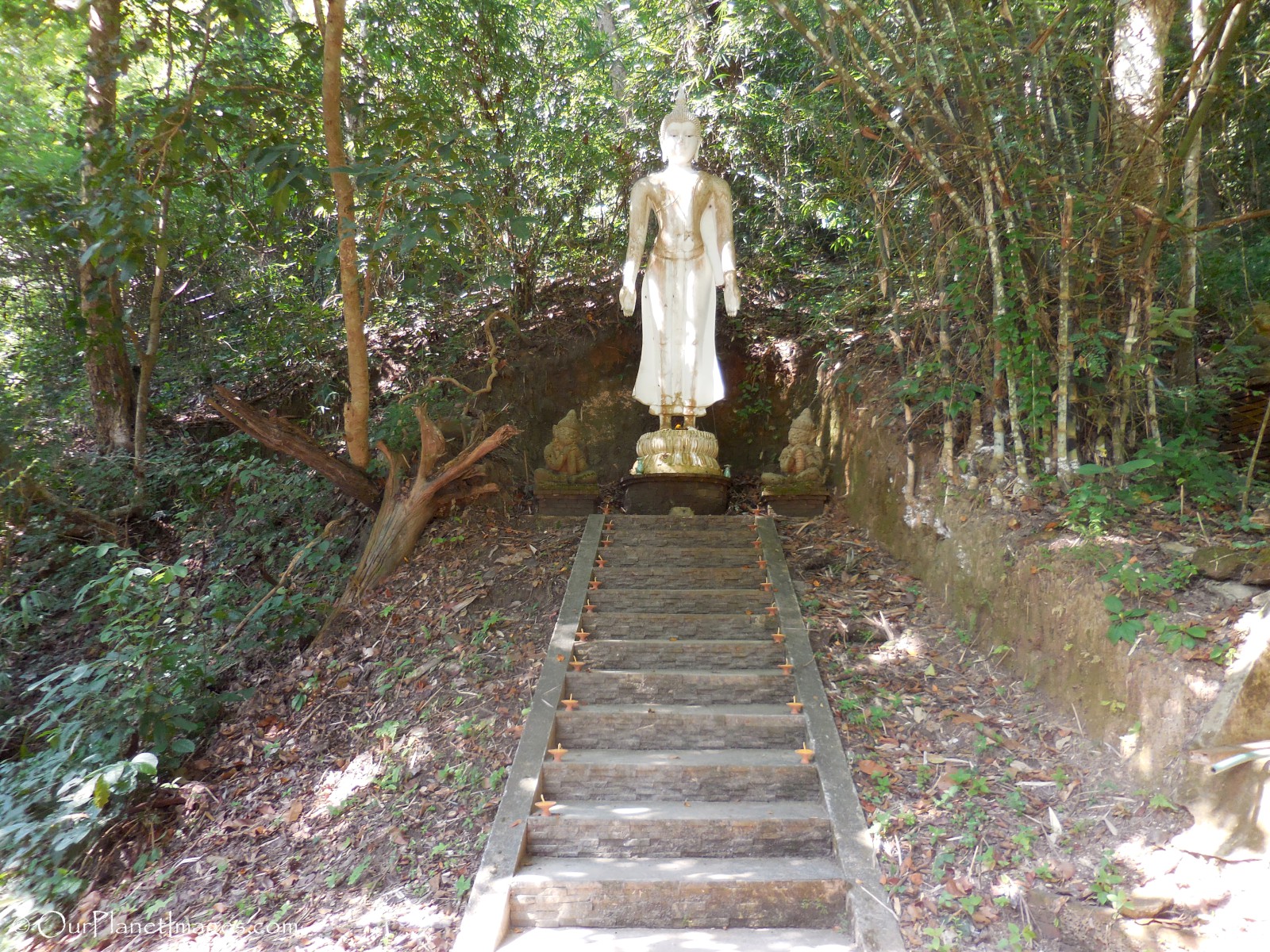
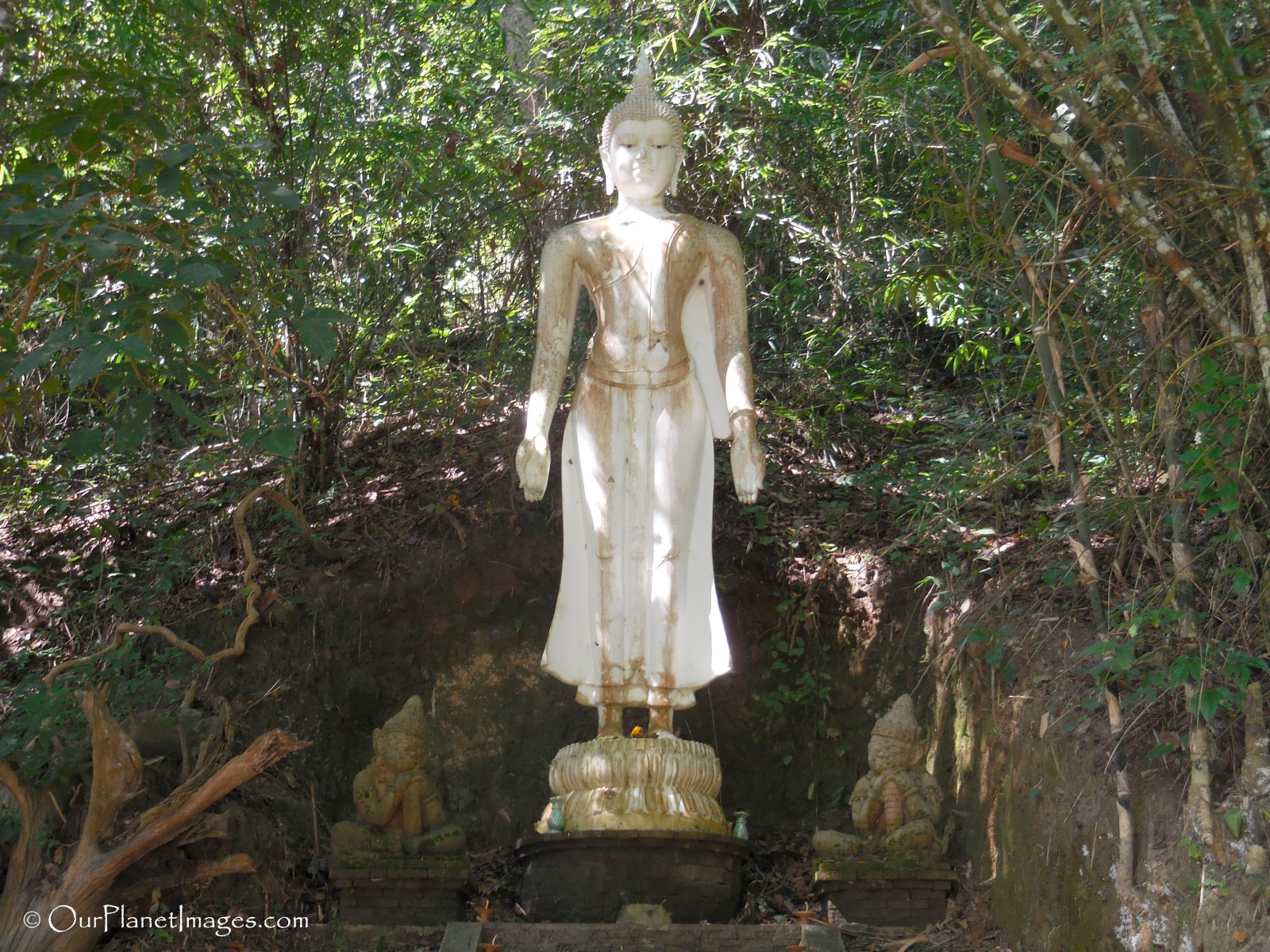
Other interesting artifacts
Just like all of the other Buddhist temples that I have visited, there is much more to see than the main structures. The Wat Pha Lat complex is dotted with interesting carving and Buddhist statues. The following photos are some of the other interesting artifacts at the Wat Pha Lat temple.
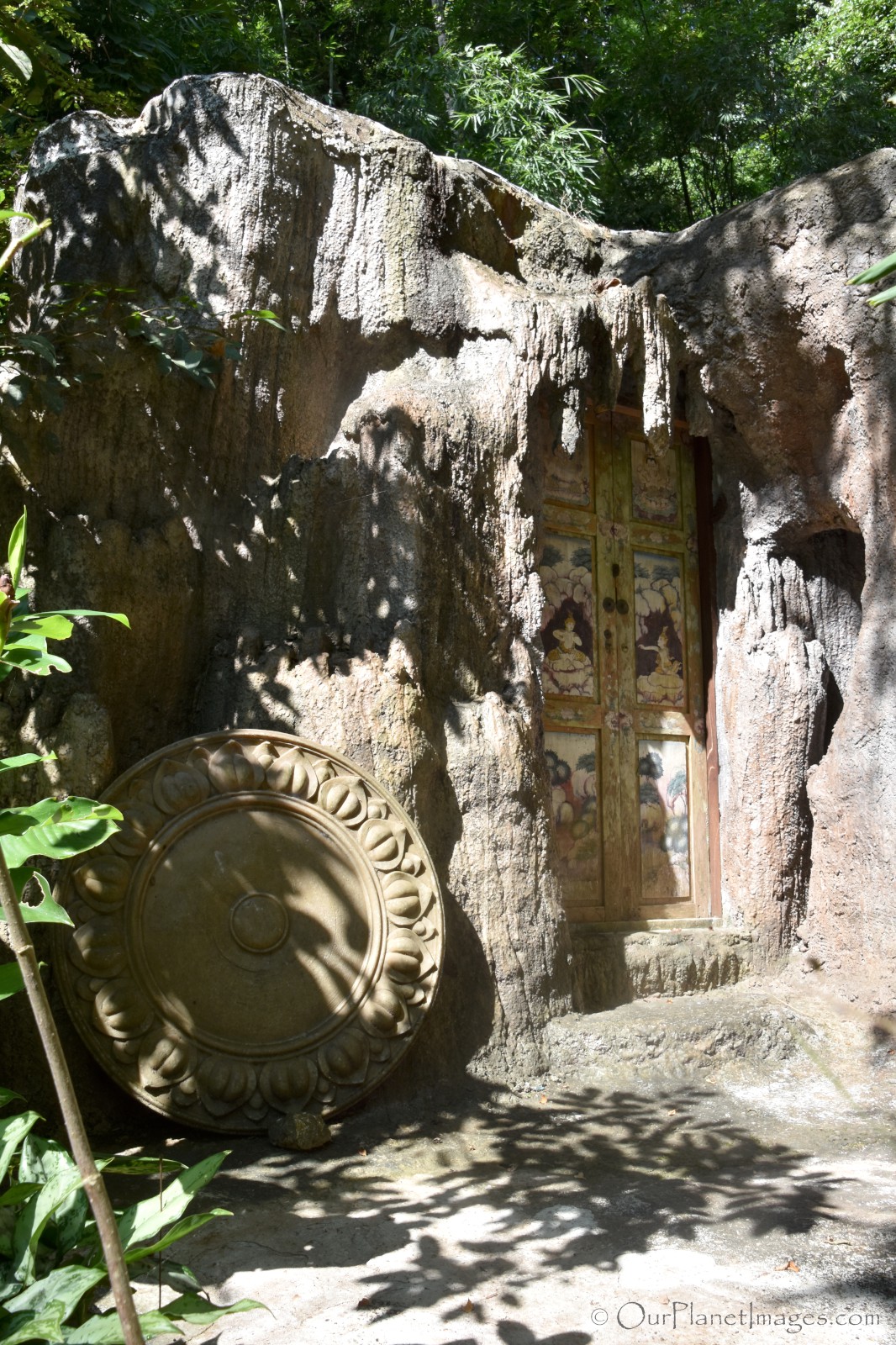
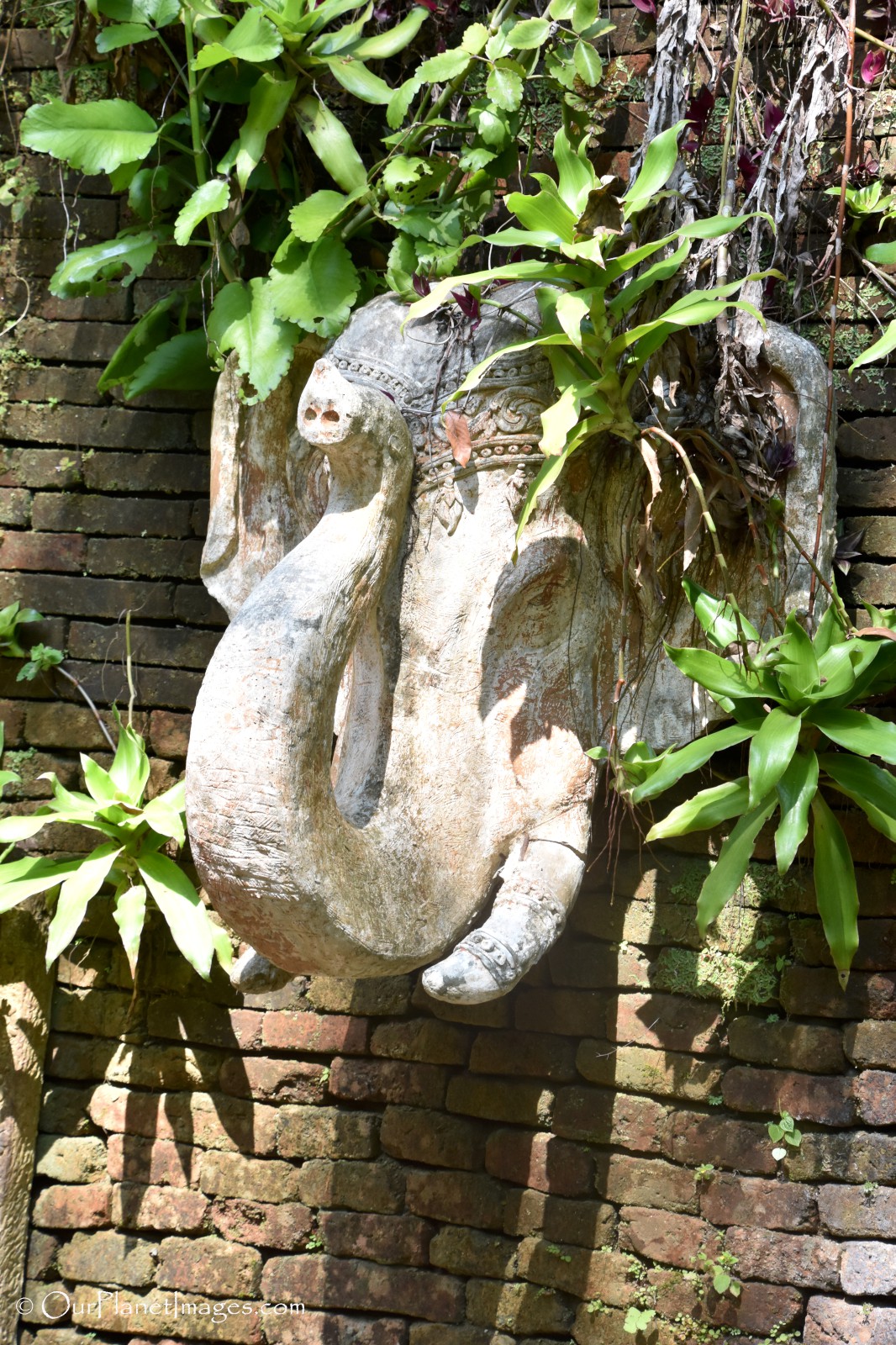
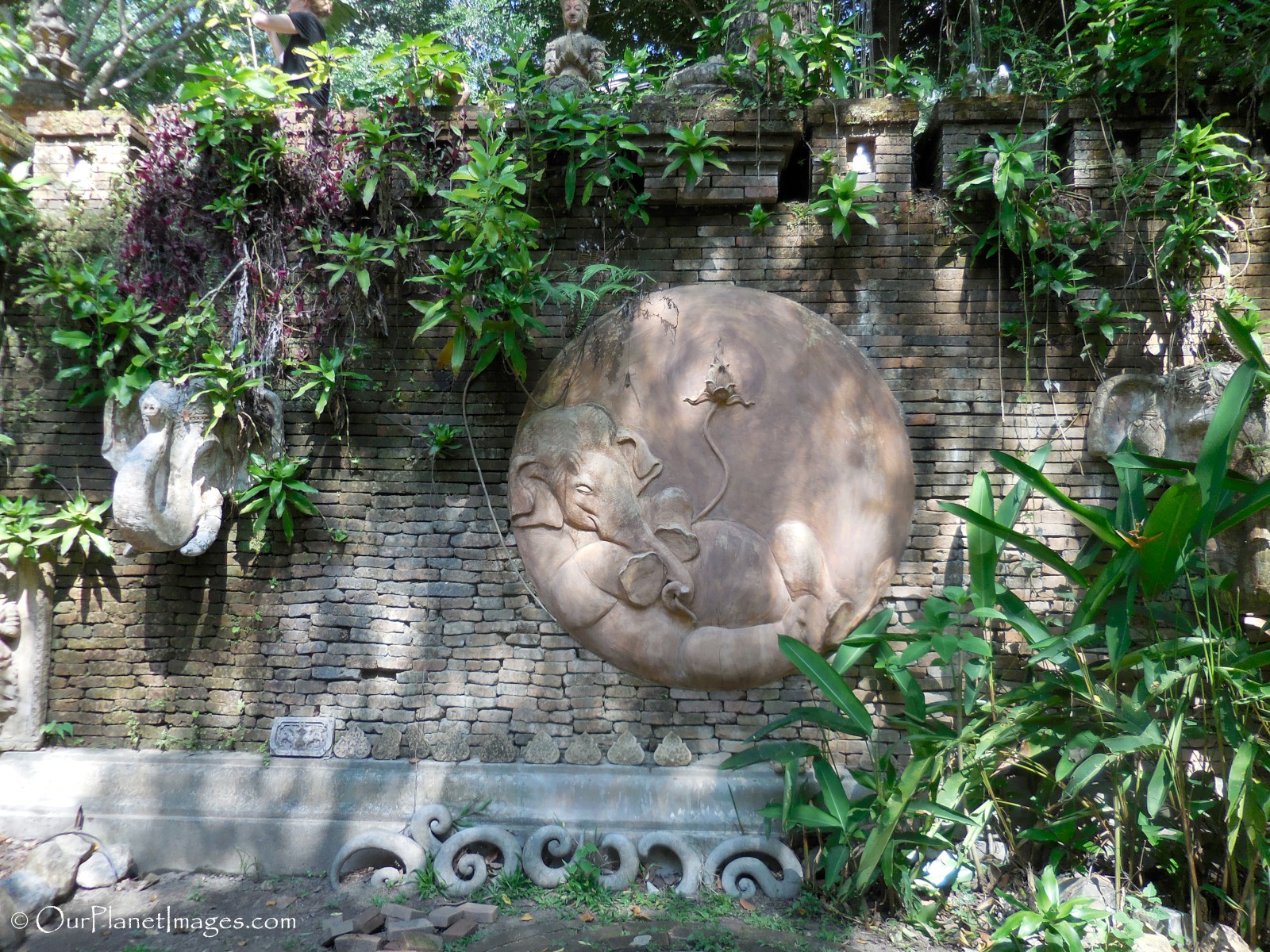
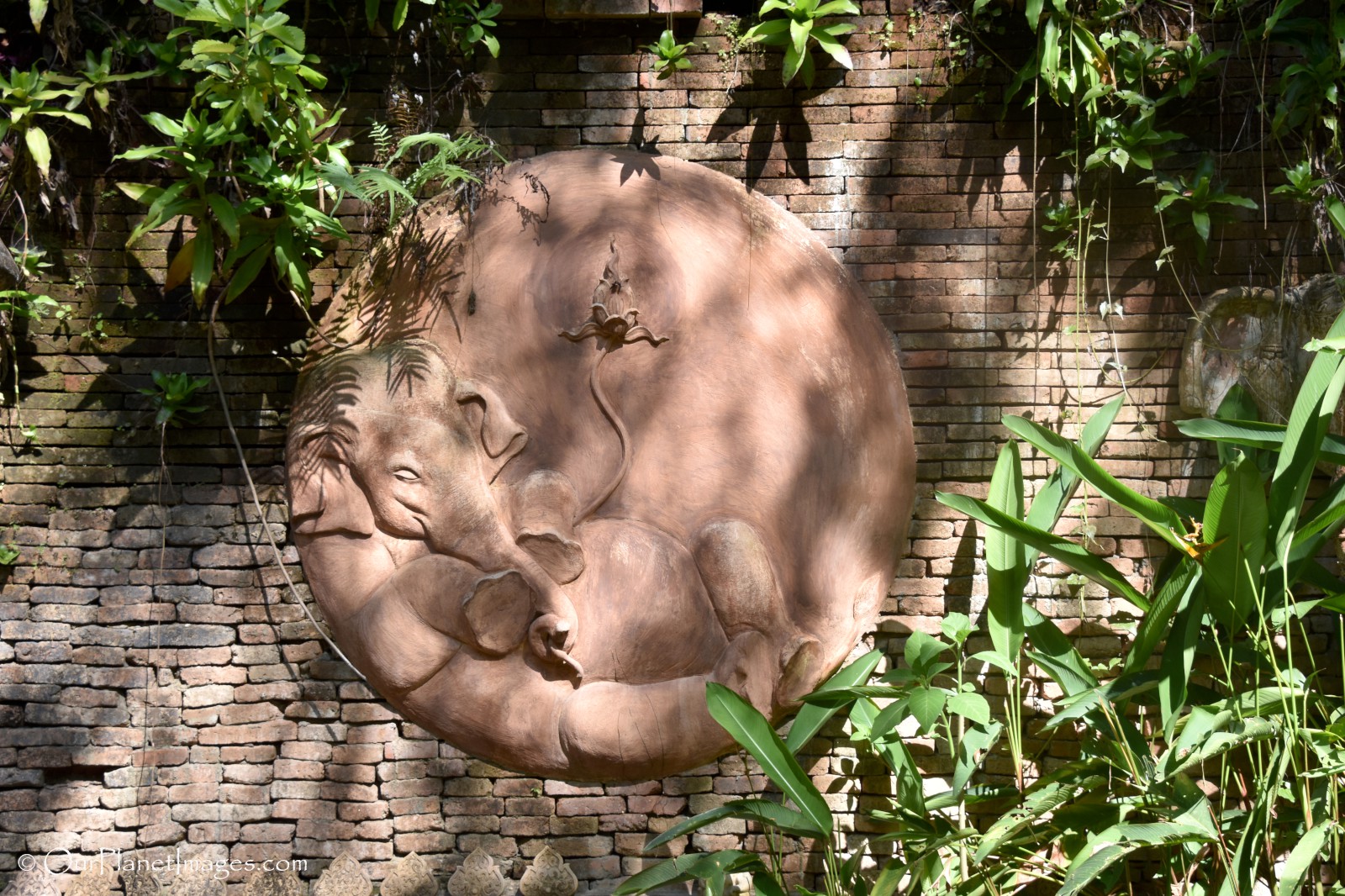
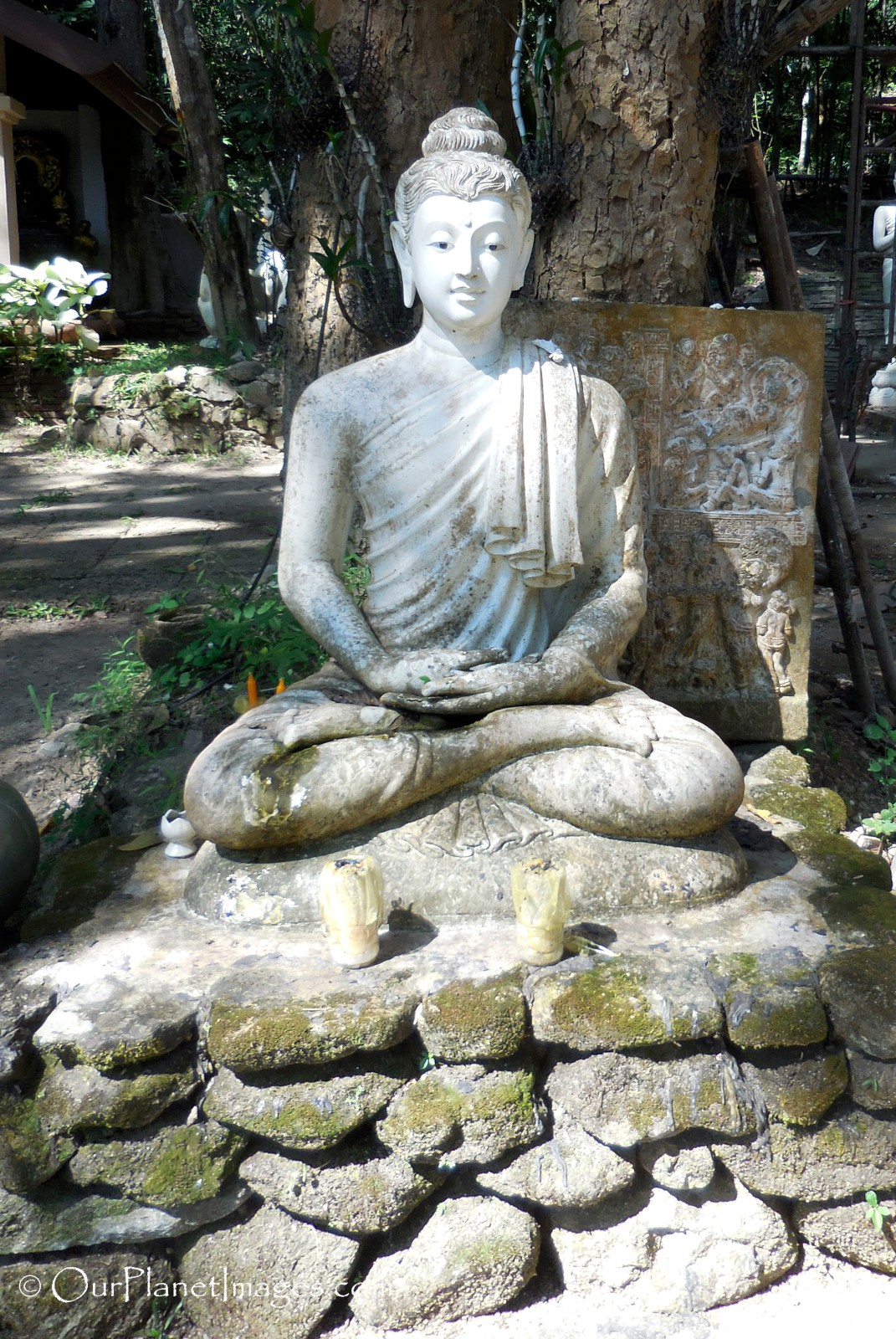
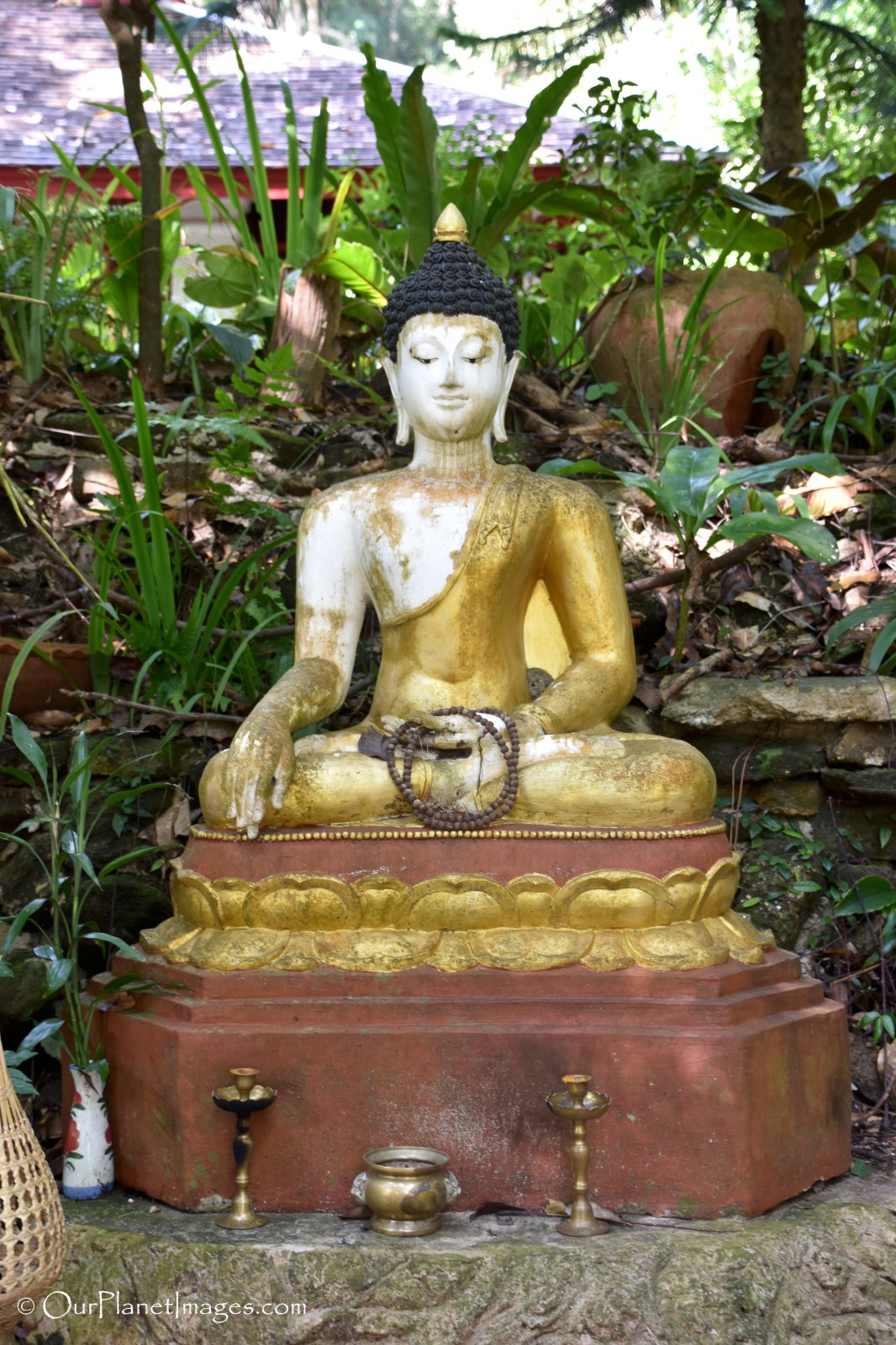
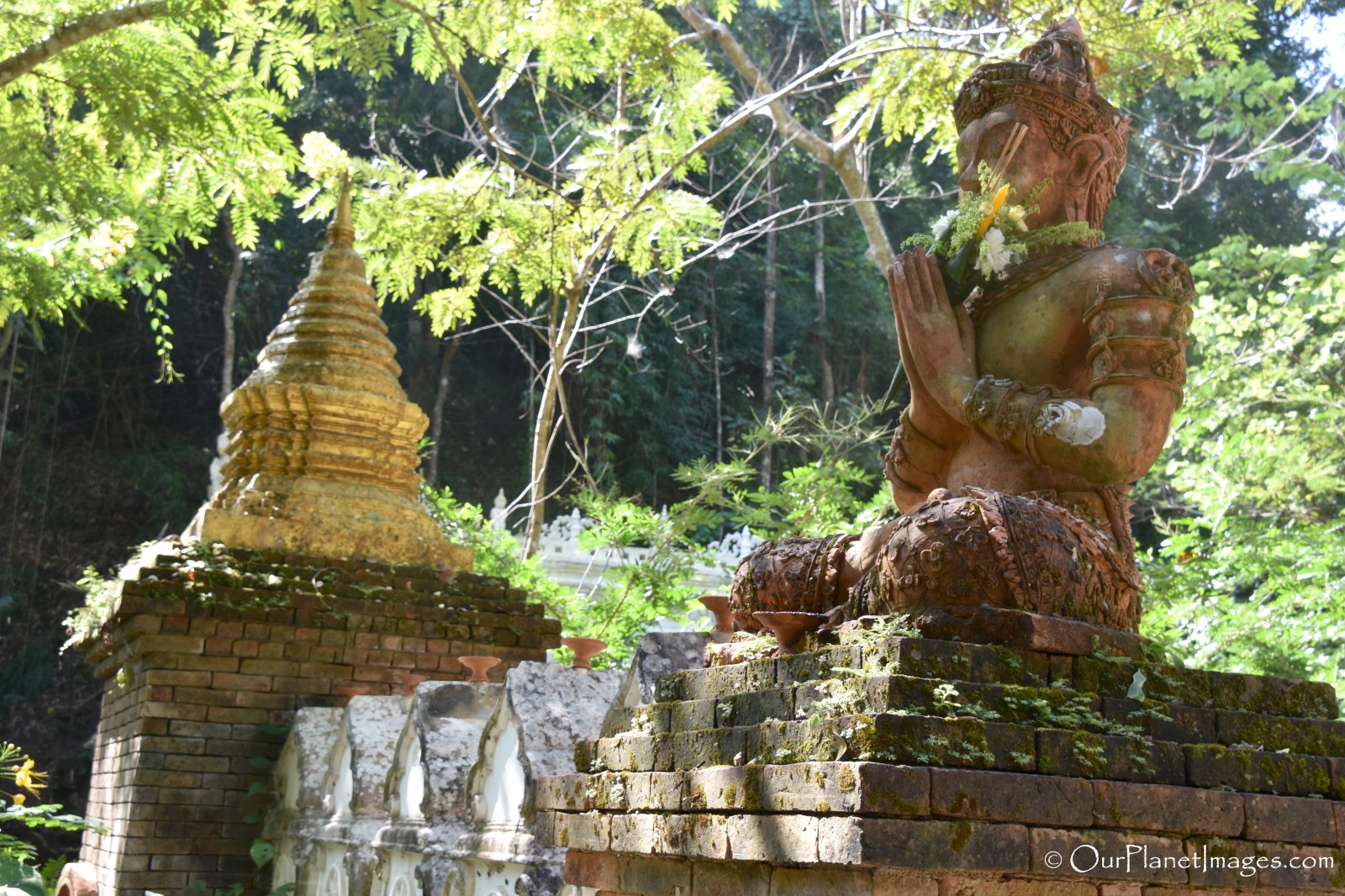
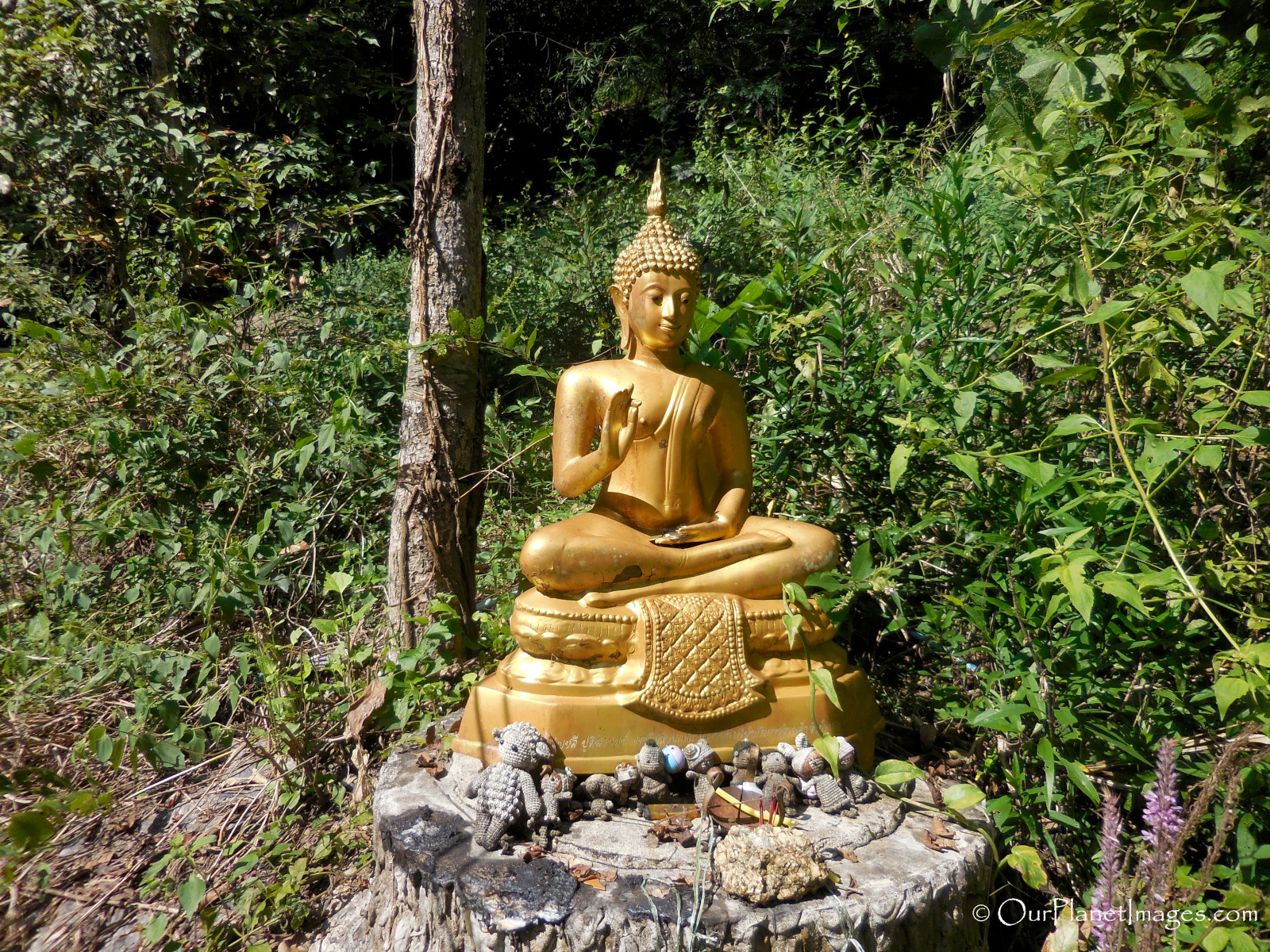

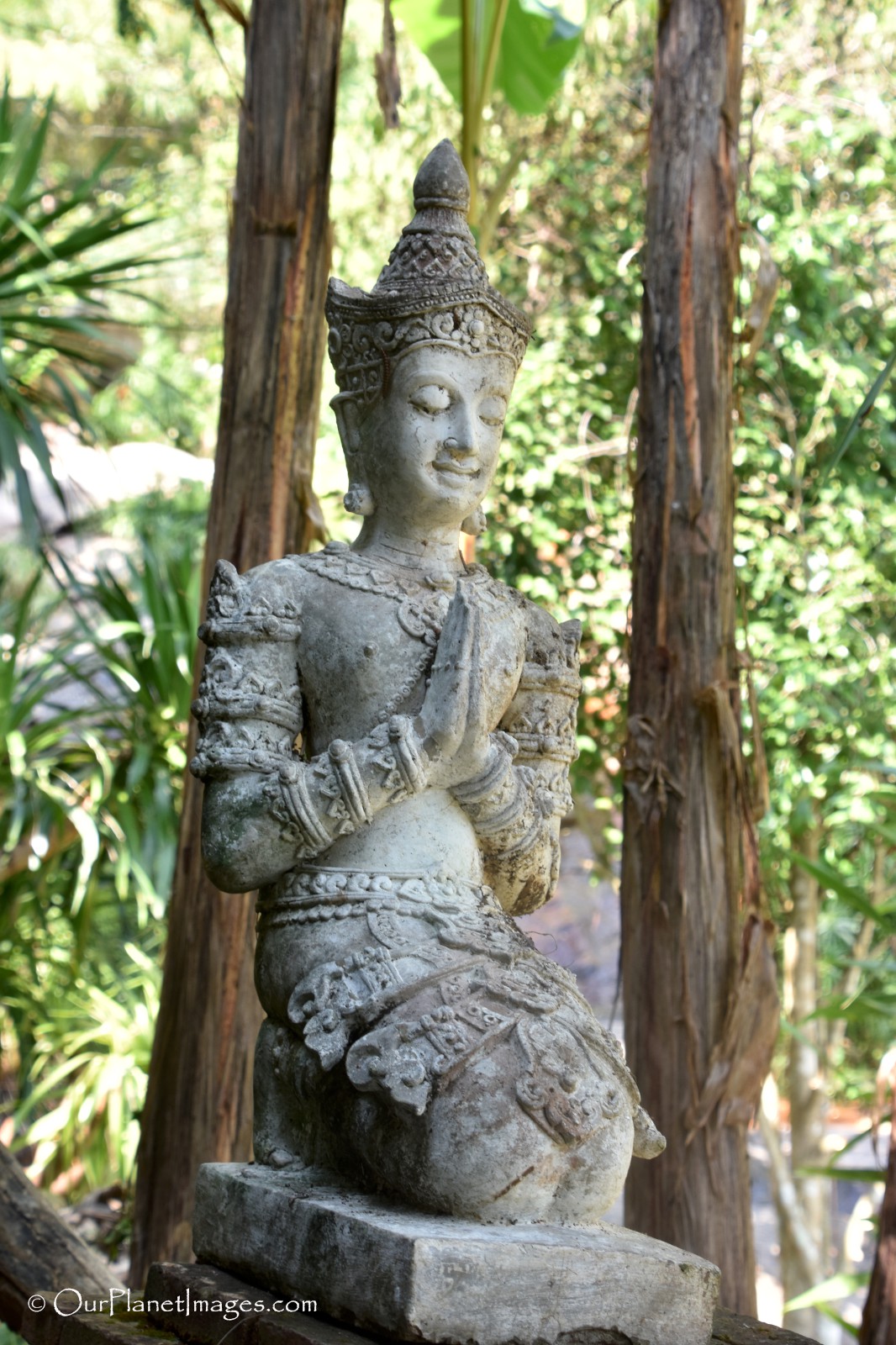

Natural surroundings
It is easy to see the jungle environment in all of the photos of the complex but I think it is important to show the natural surrounding on the edge of the complex. The natural surroundings of almost impenetrable jungle really gives the temple a completely different feeling from any other Buddhist temple that I have visited.
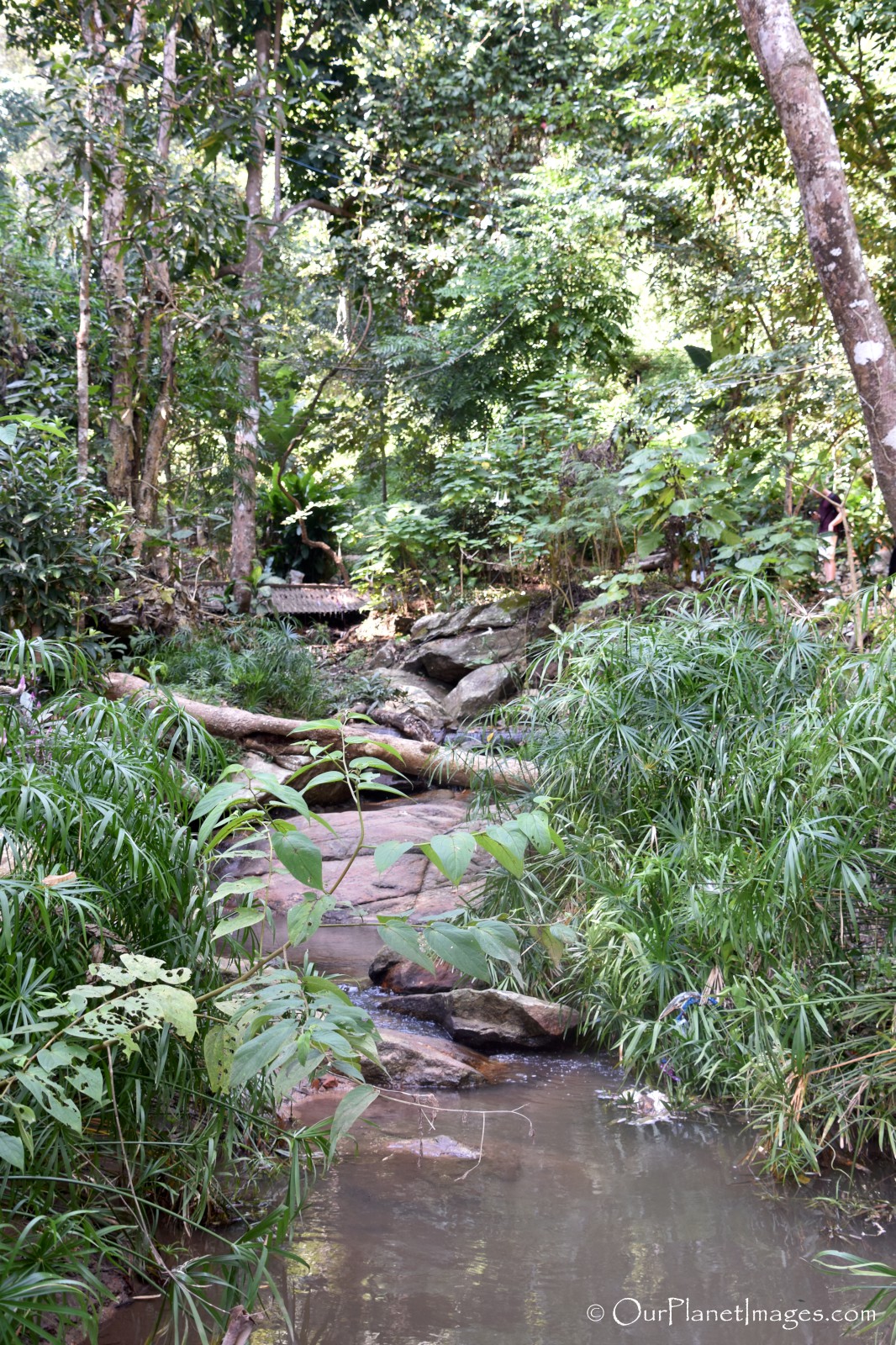
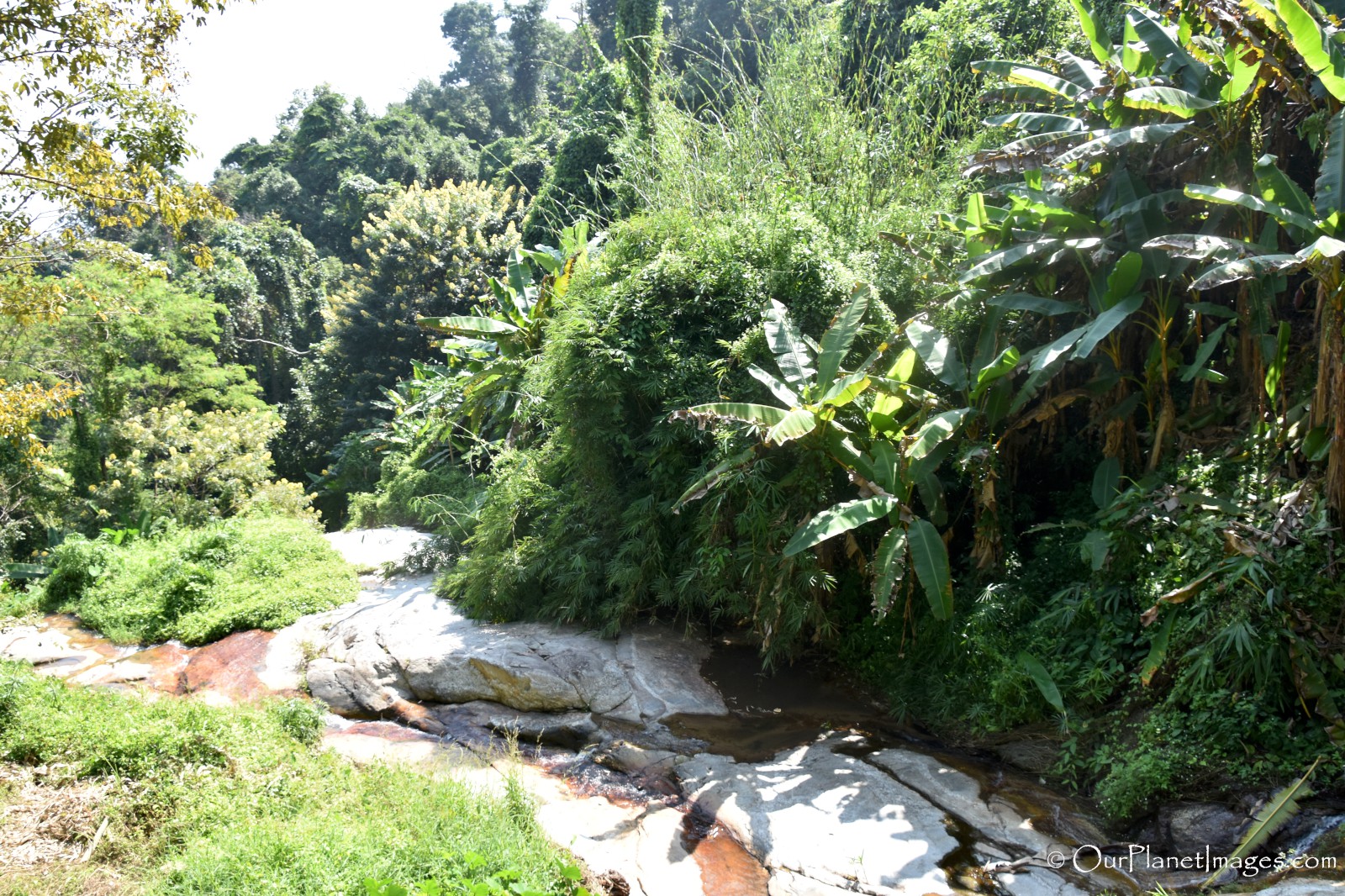
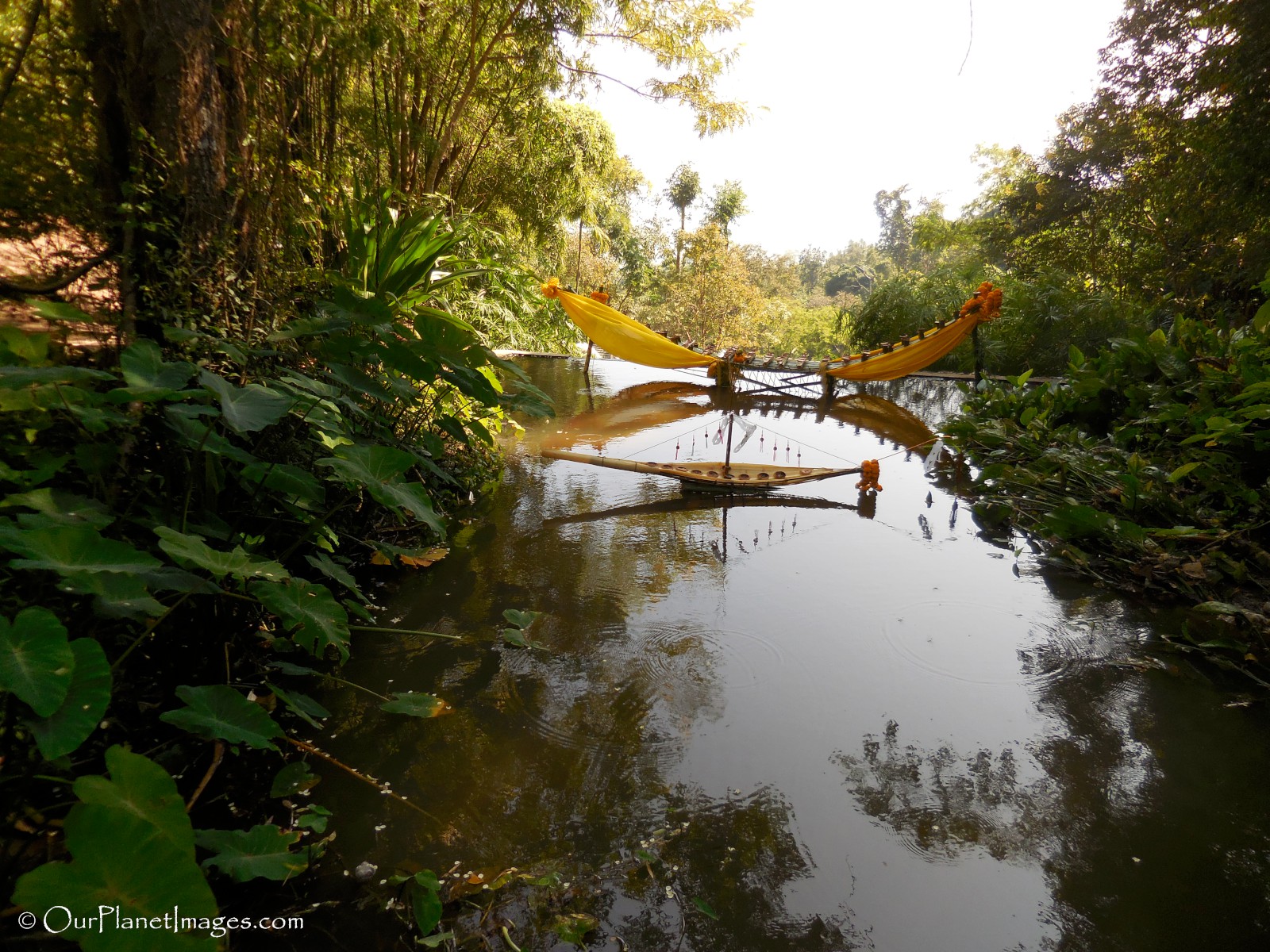
The Dust on My Shoes
Wat Pha Lat is a hidden jungle temple tucked into the mountains just outside Chiang Mai and near Wat Phrathat Dio Suthep. Chiang Mai is known as the city of temples and Wat Pha Lat is one of the lesser known temples probably because it is not easy to find and the temple buildings are very understated compared to the other temples in Chiang Mai that are fancily adorned with golden plated stupas and Buddha statues. These understated qualities and the tranquil nature of being remote without many tourist are the qualities that I found most appealing.
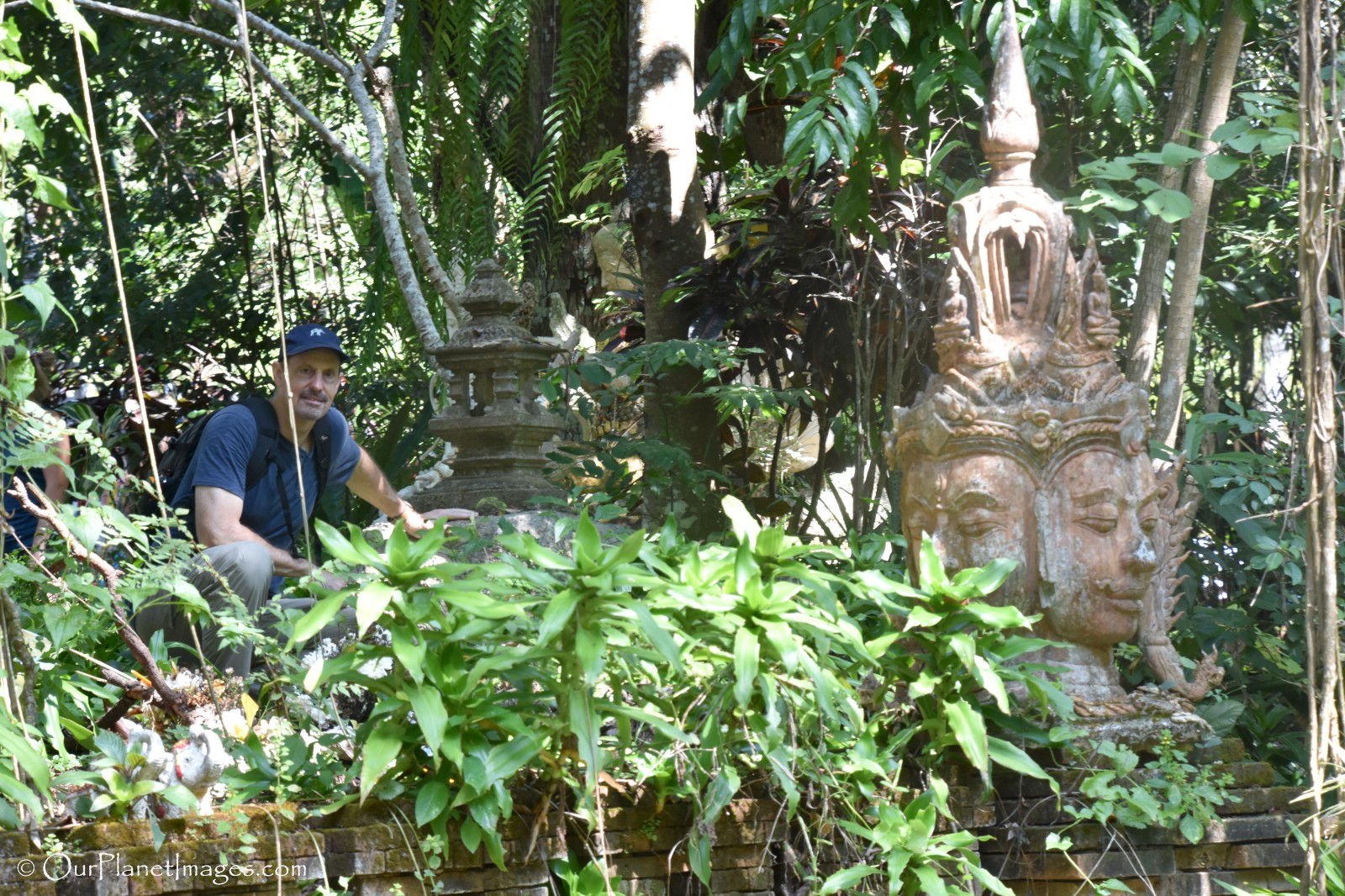
The temple grounds are filled with the soothing sounds of flowing water and tree leaves blowing in the wind. The jungle setting and the moss covered statues give the temple complex a sense of mystery. It is so isolated and with only a few tourists wandering around it seem like it is an abandoned temple, but it is still operational.
One of the most noticeable aspects of the temple is how nature has encroached into the temple. Some places vines and roots from the jungle have crept onto the buildings and statues and the temple seems to seamlessly blend into the natural environment.
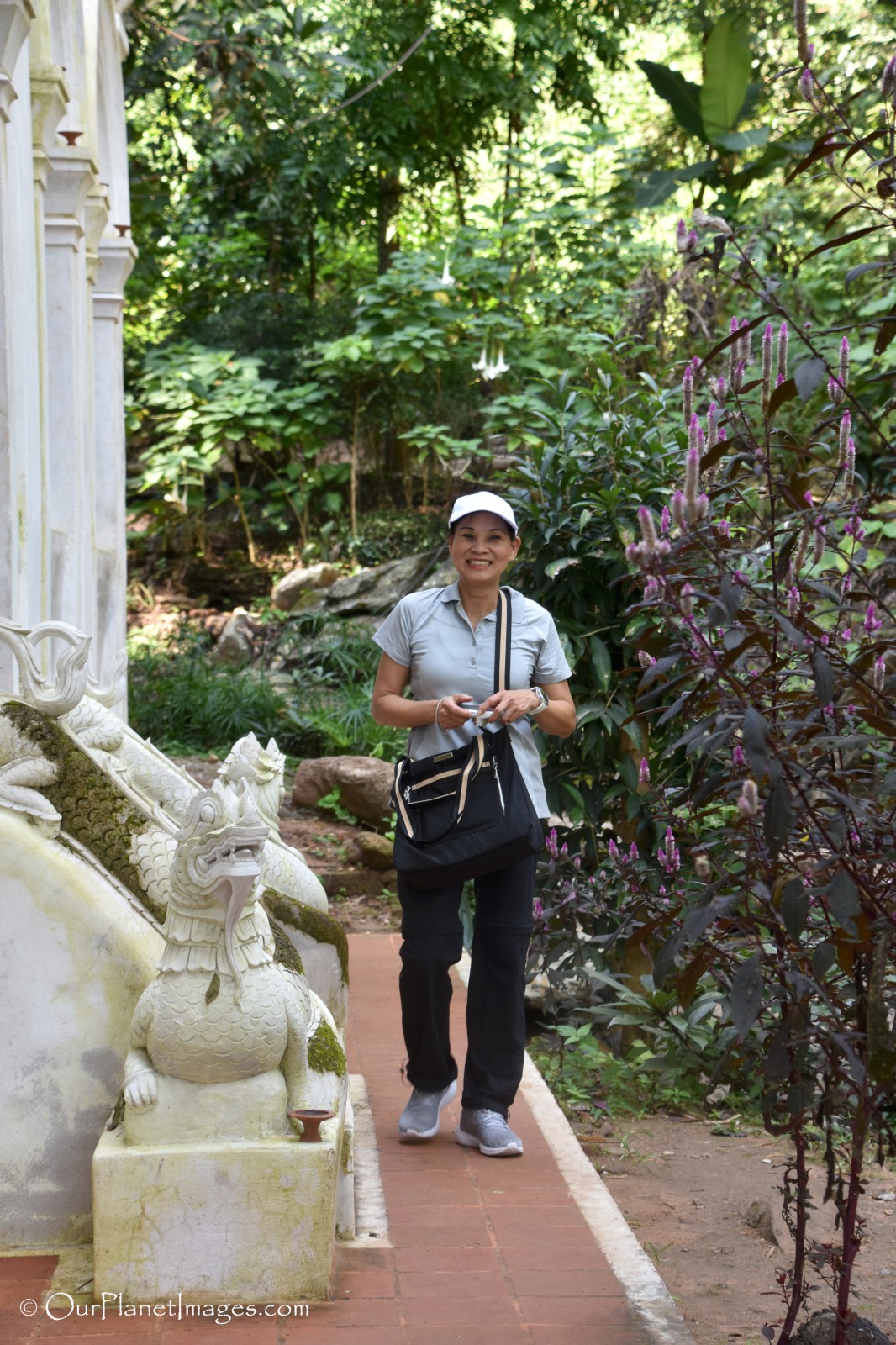
Tourists are normally wowed by the overwhelming beauty of the spectacular temples in Thailand, Wat Pha Lat is not that type of temple but its simplicity, peacefulness and harmony with nature left me just as fascinated as many of the other temples that is have visited in Thailand.
Visiting simple places can be just as exciting as the spectacular sites. Try to combine simple sites with spectacular sites when traveling.

